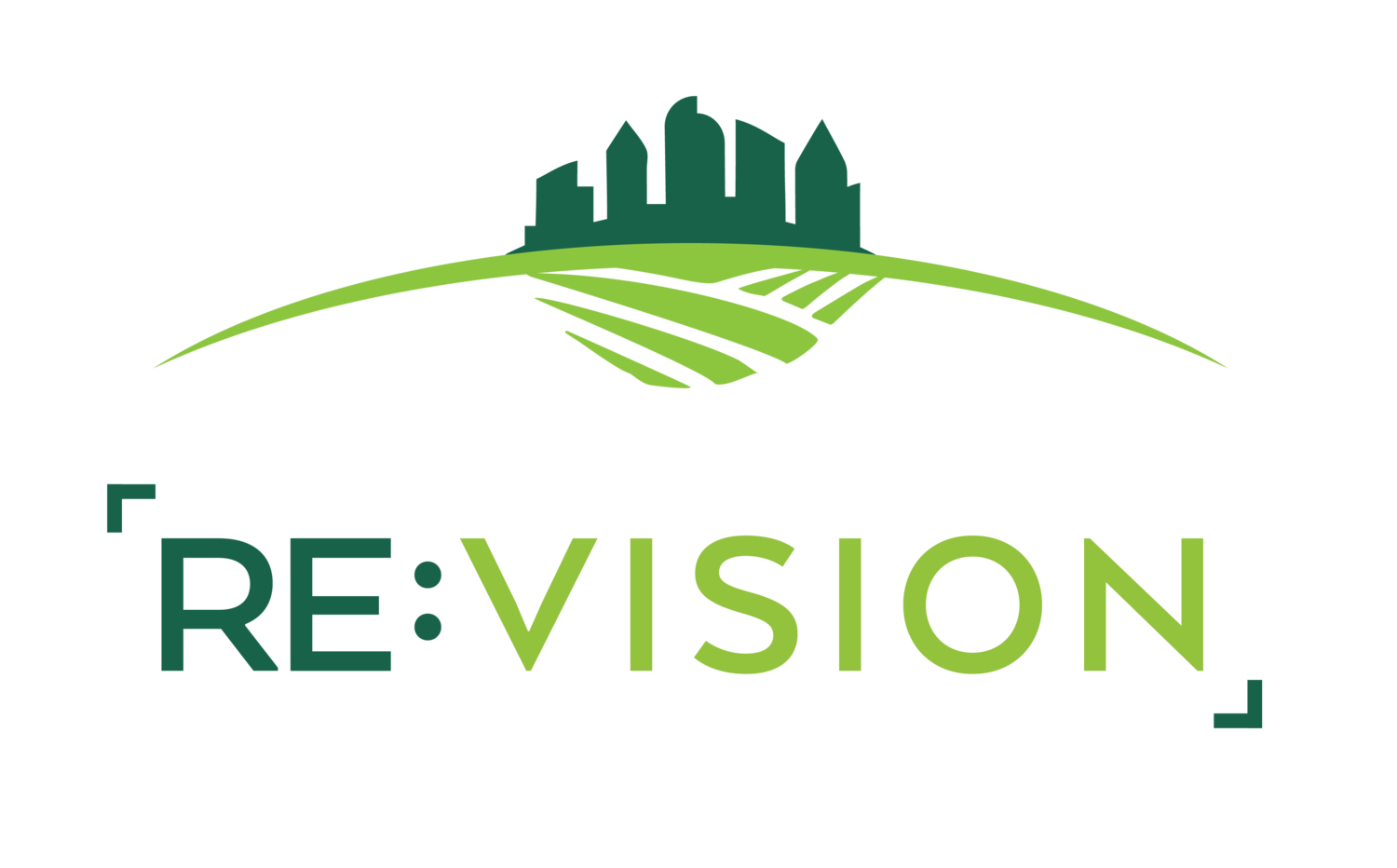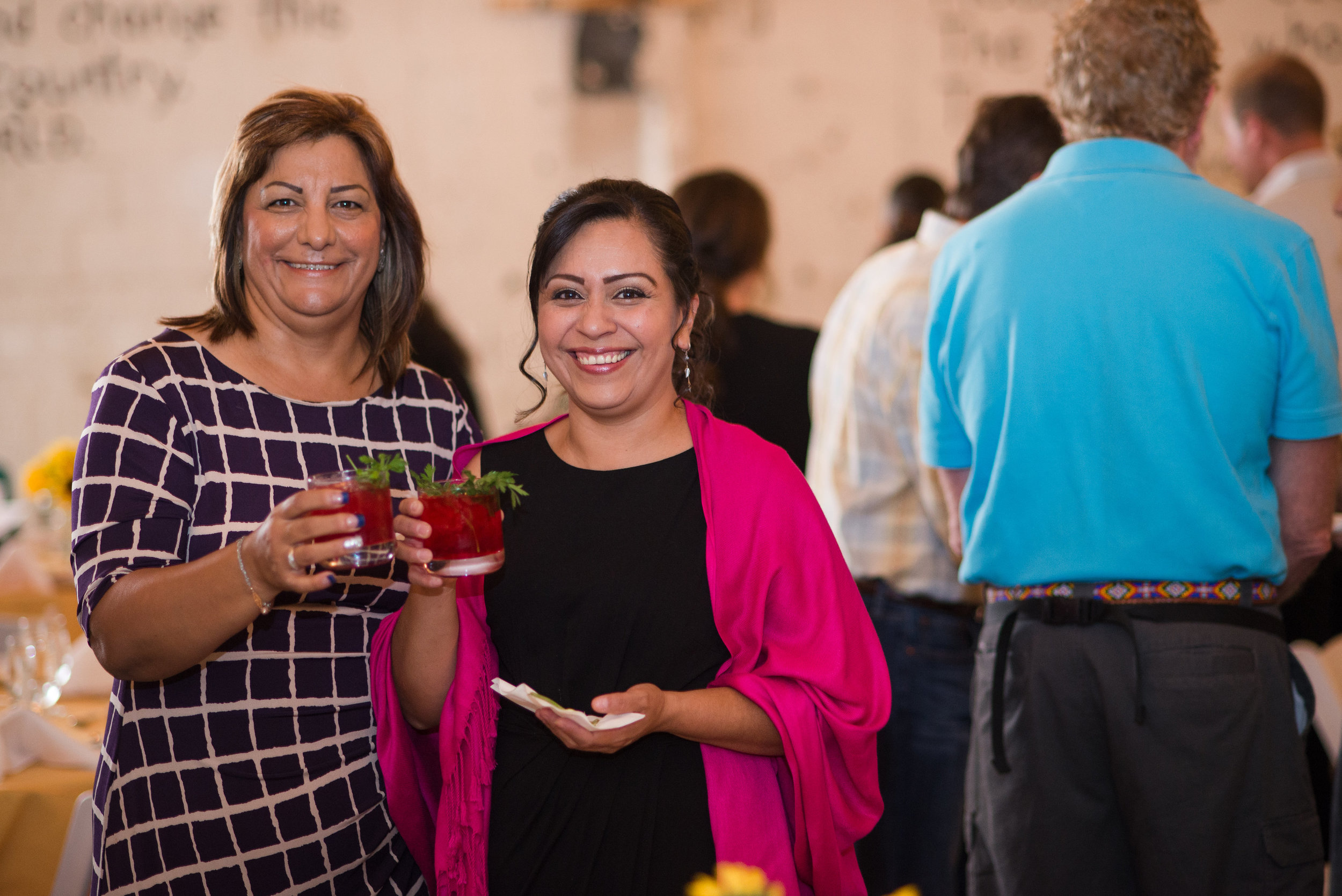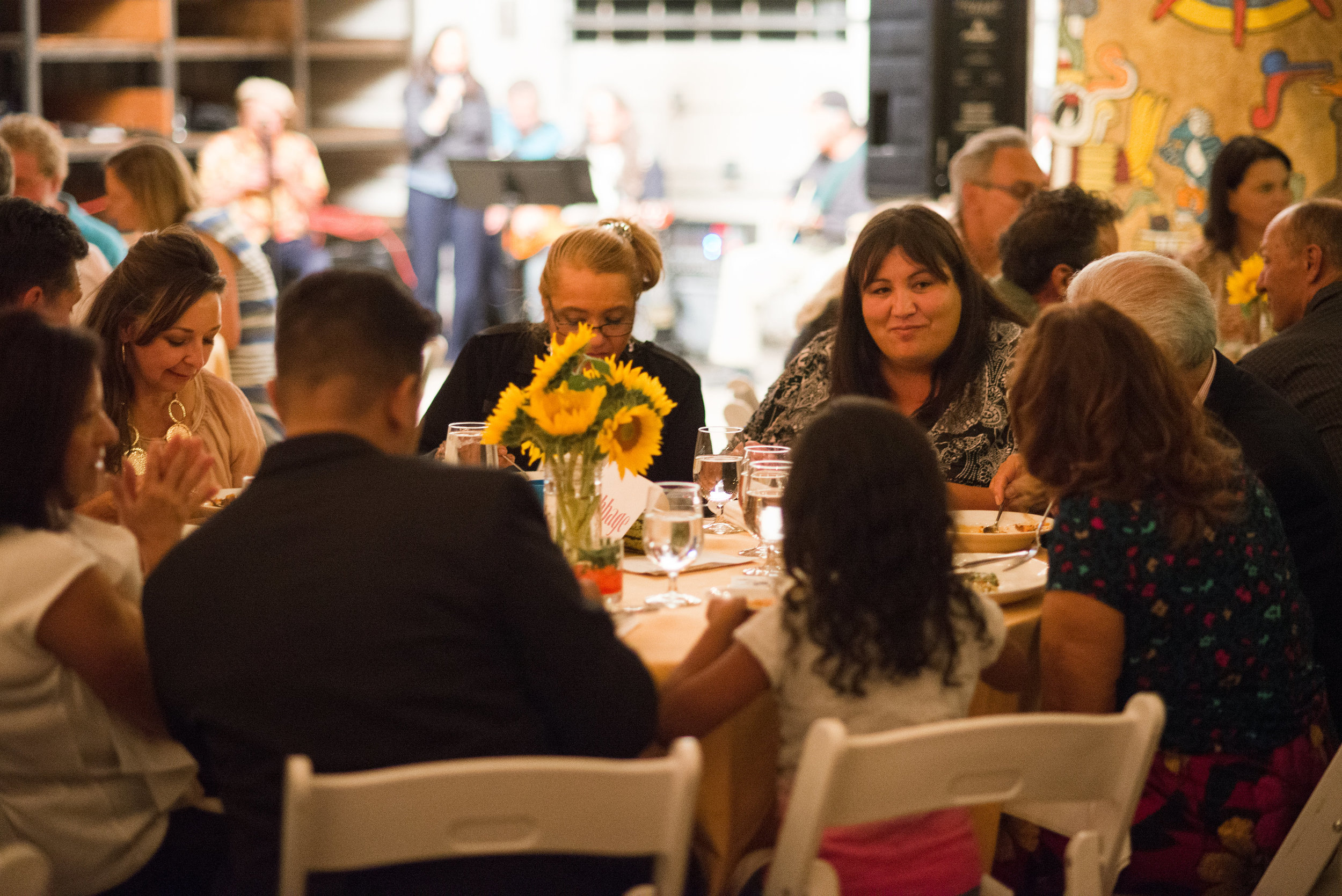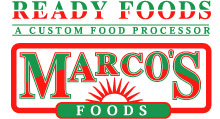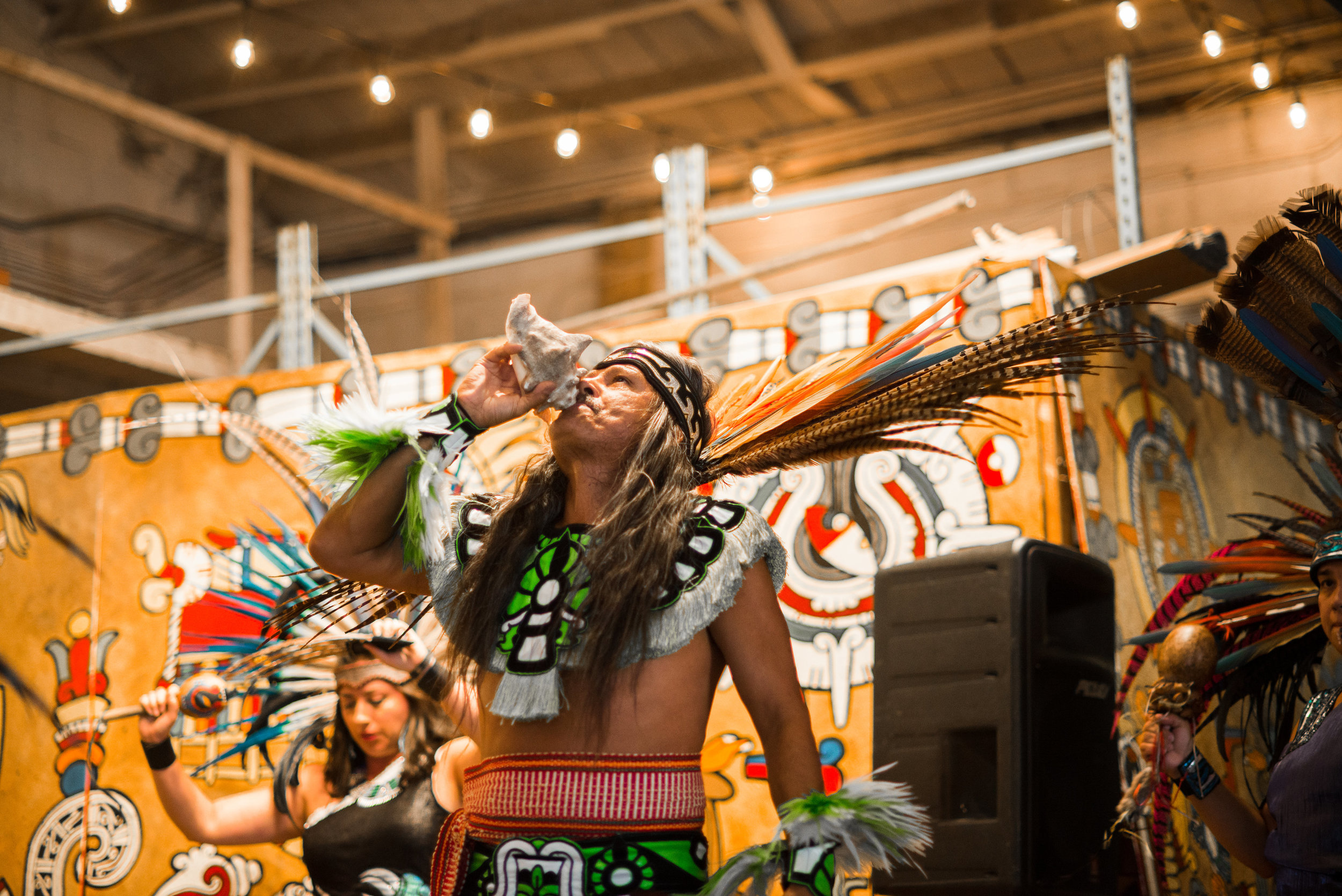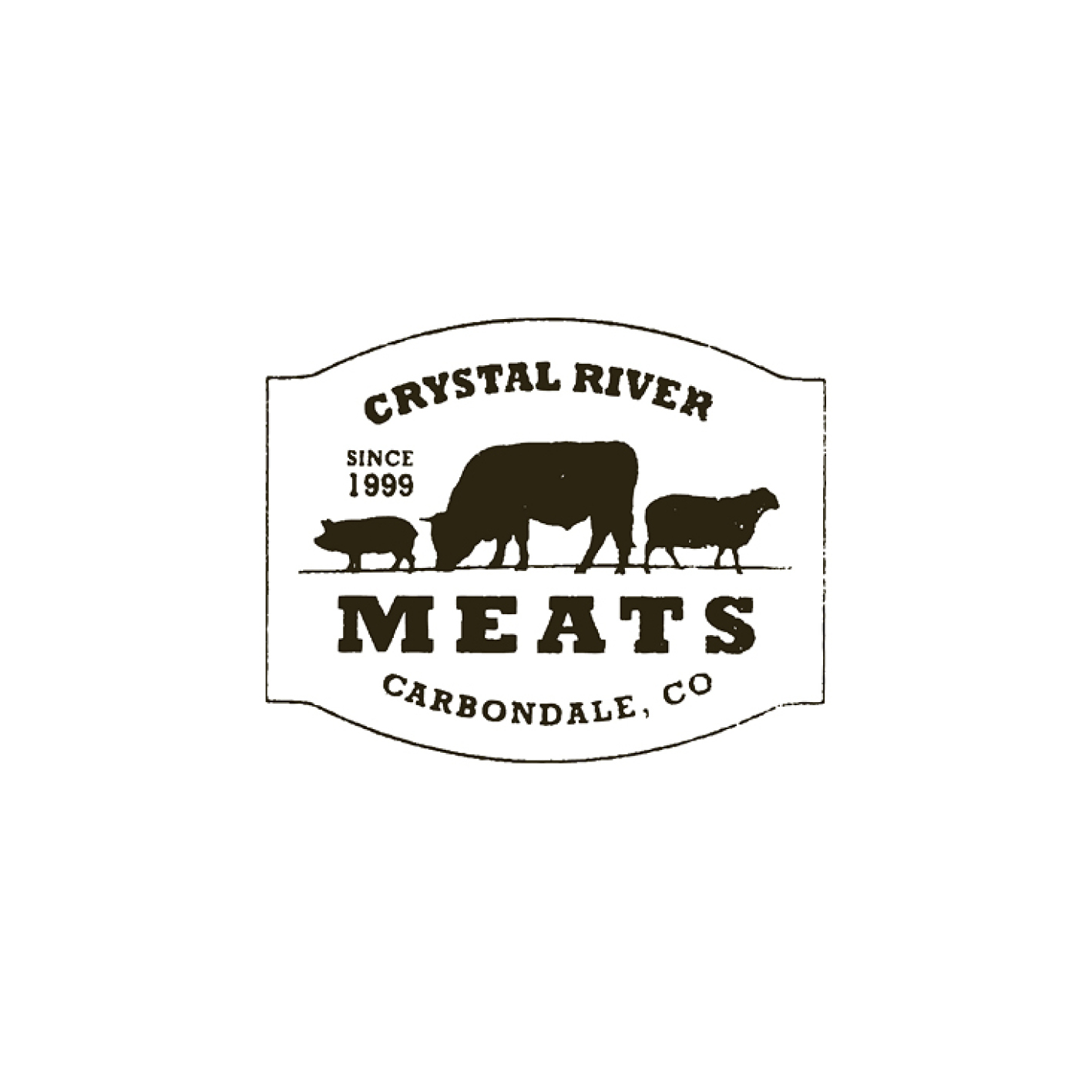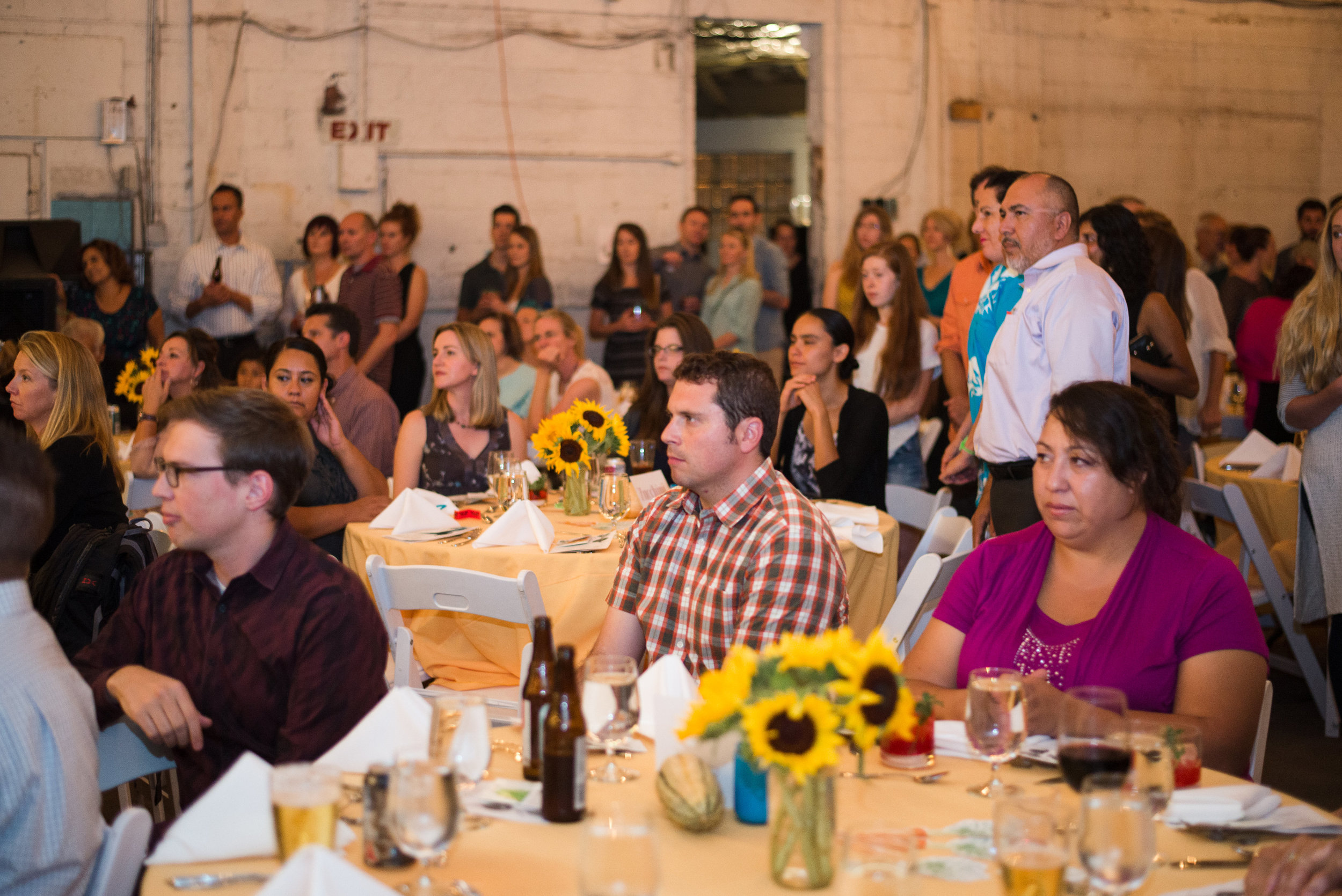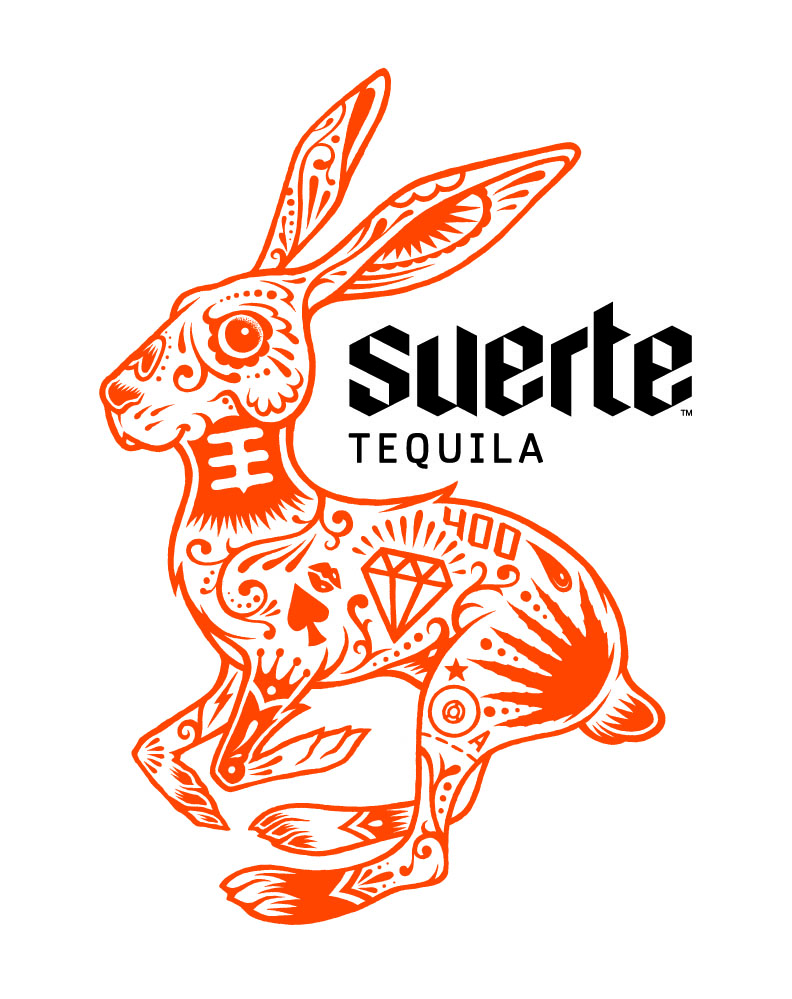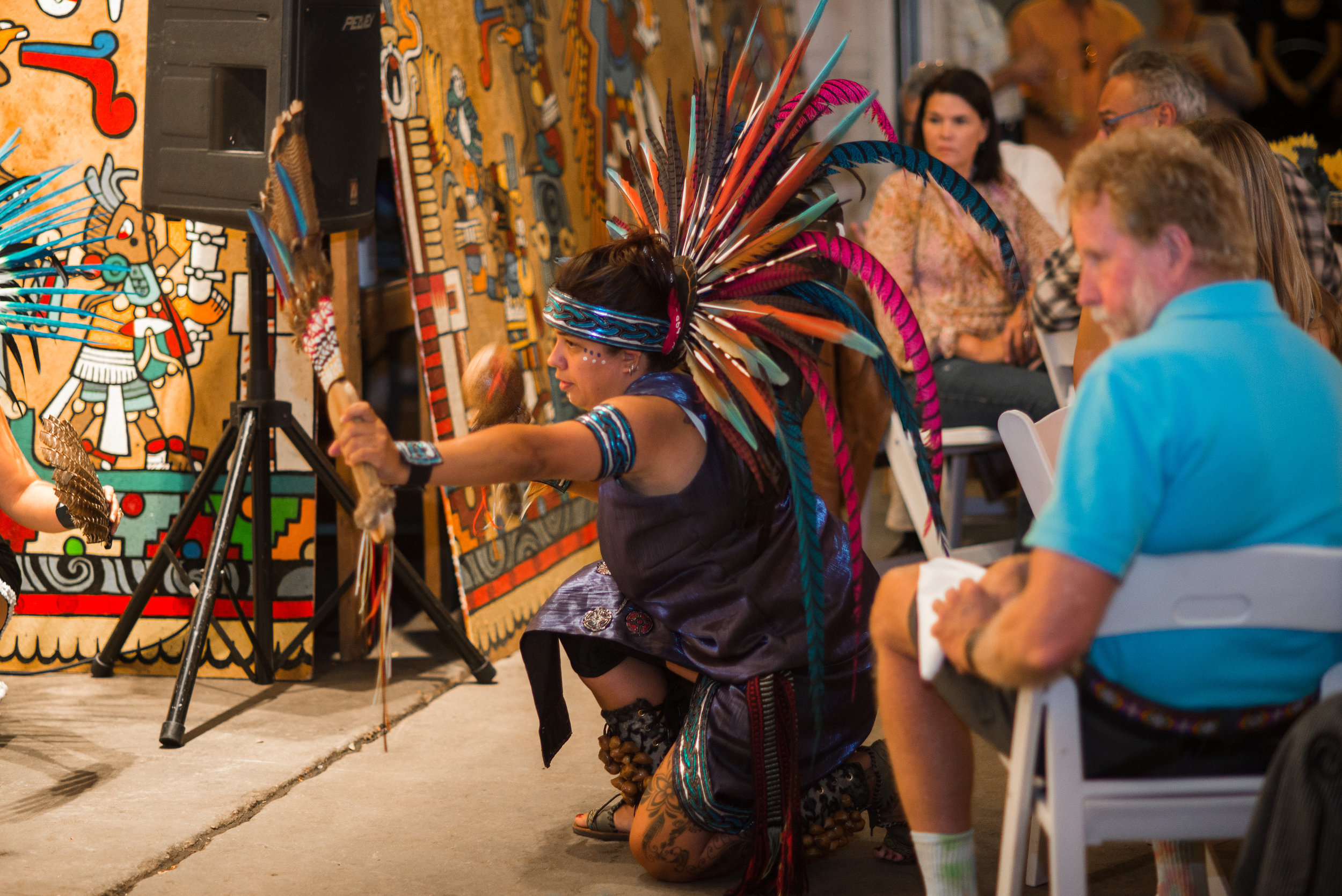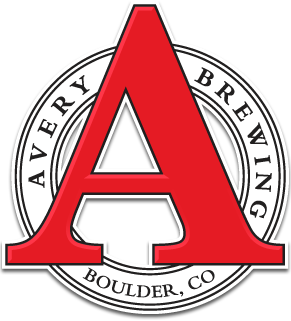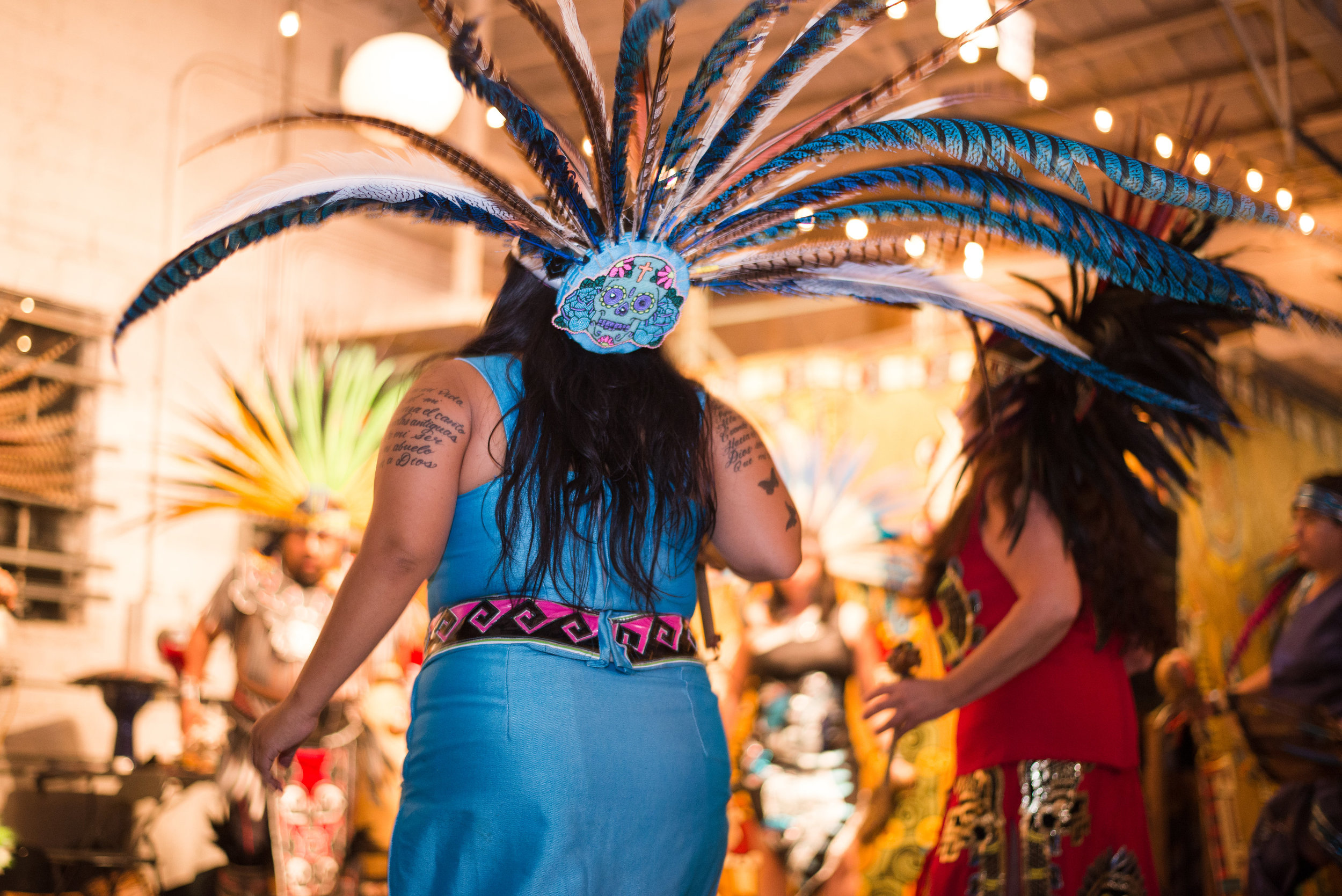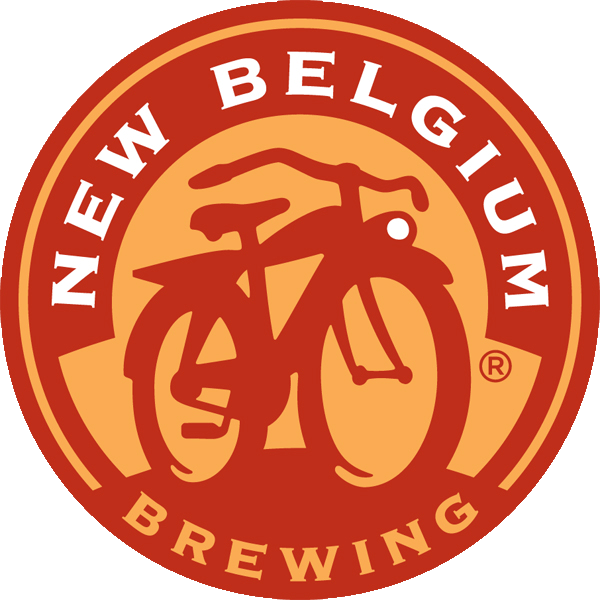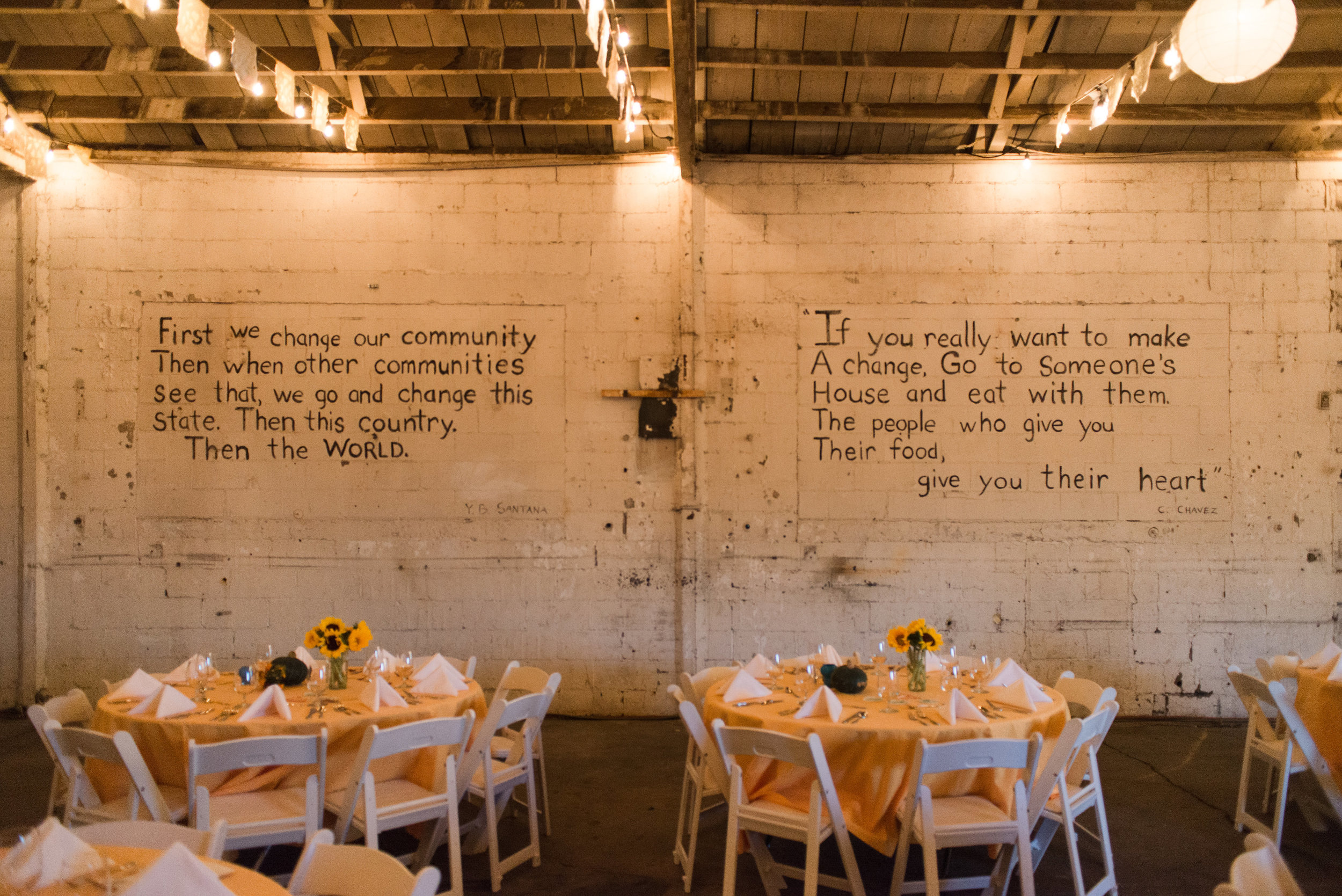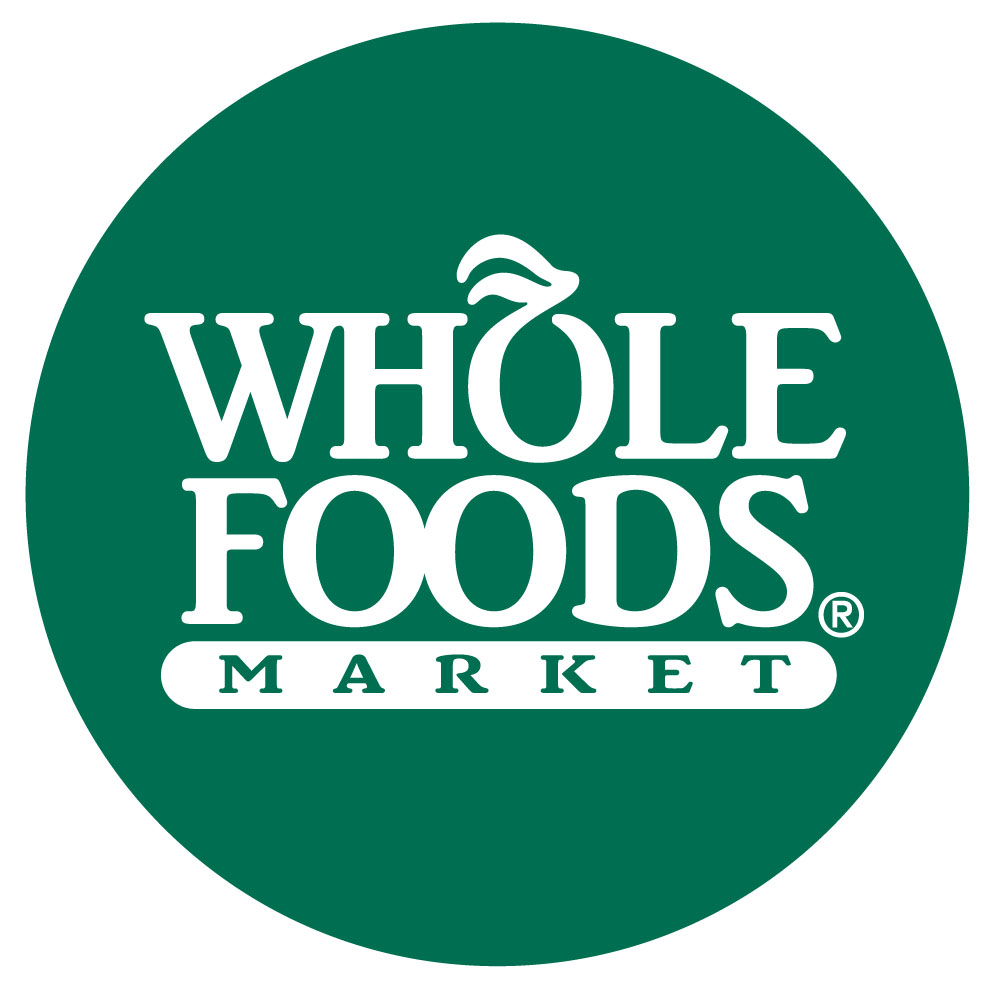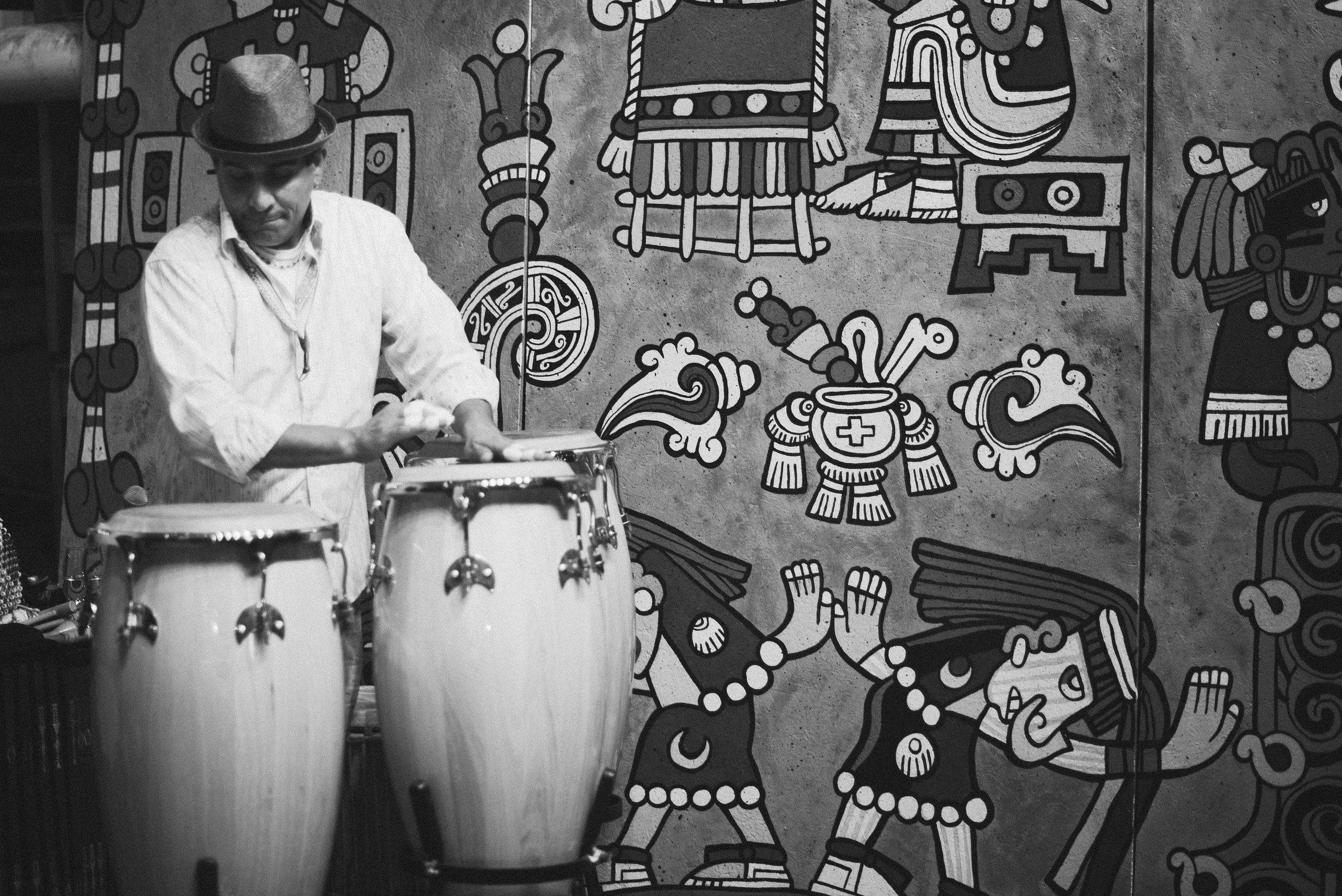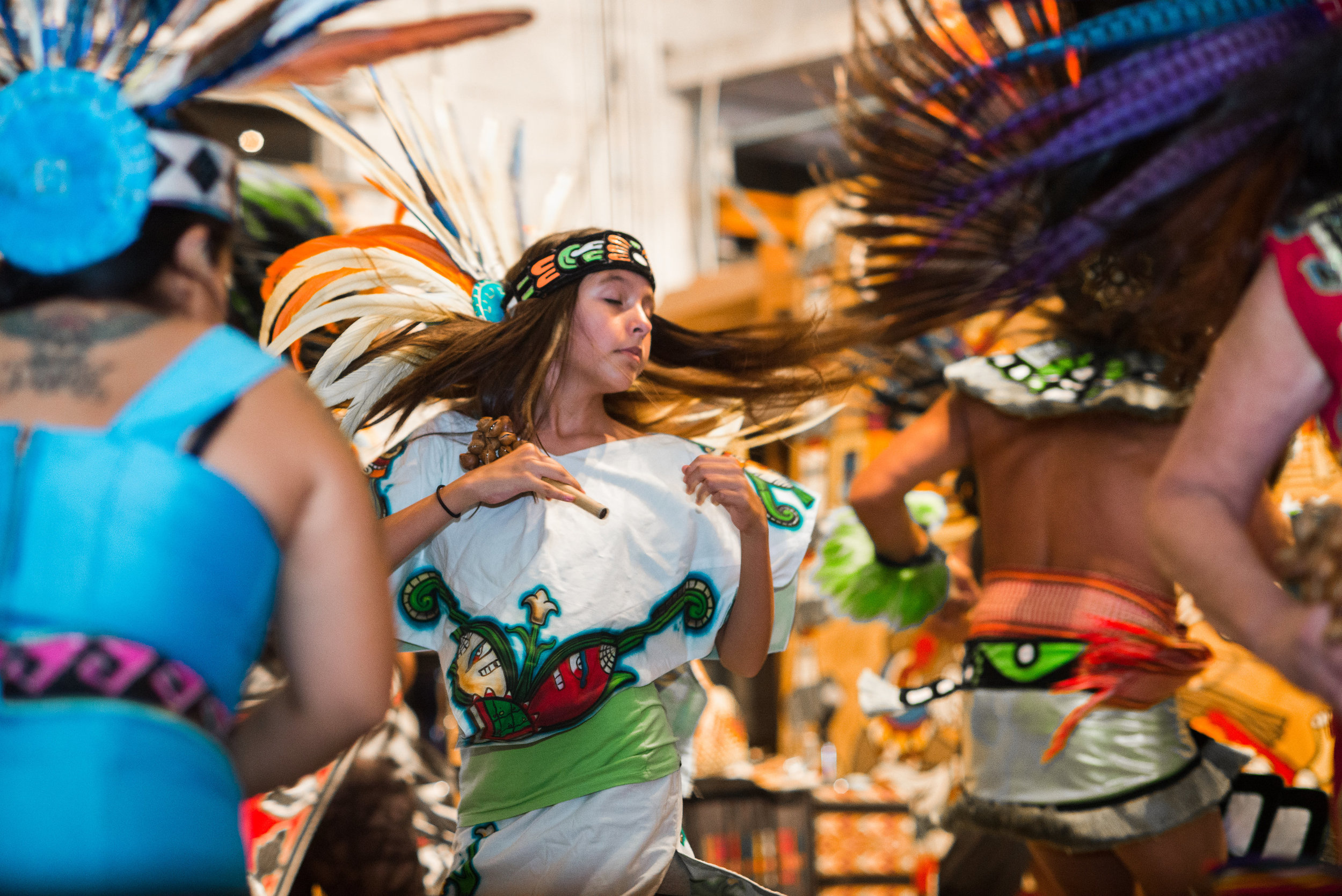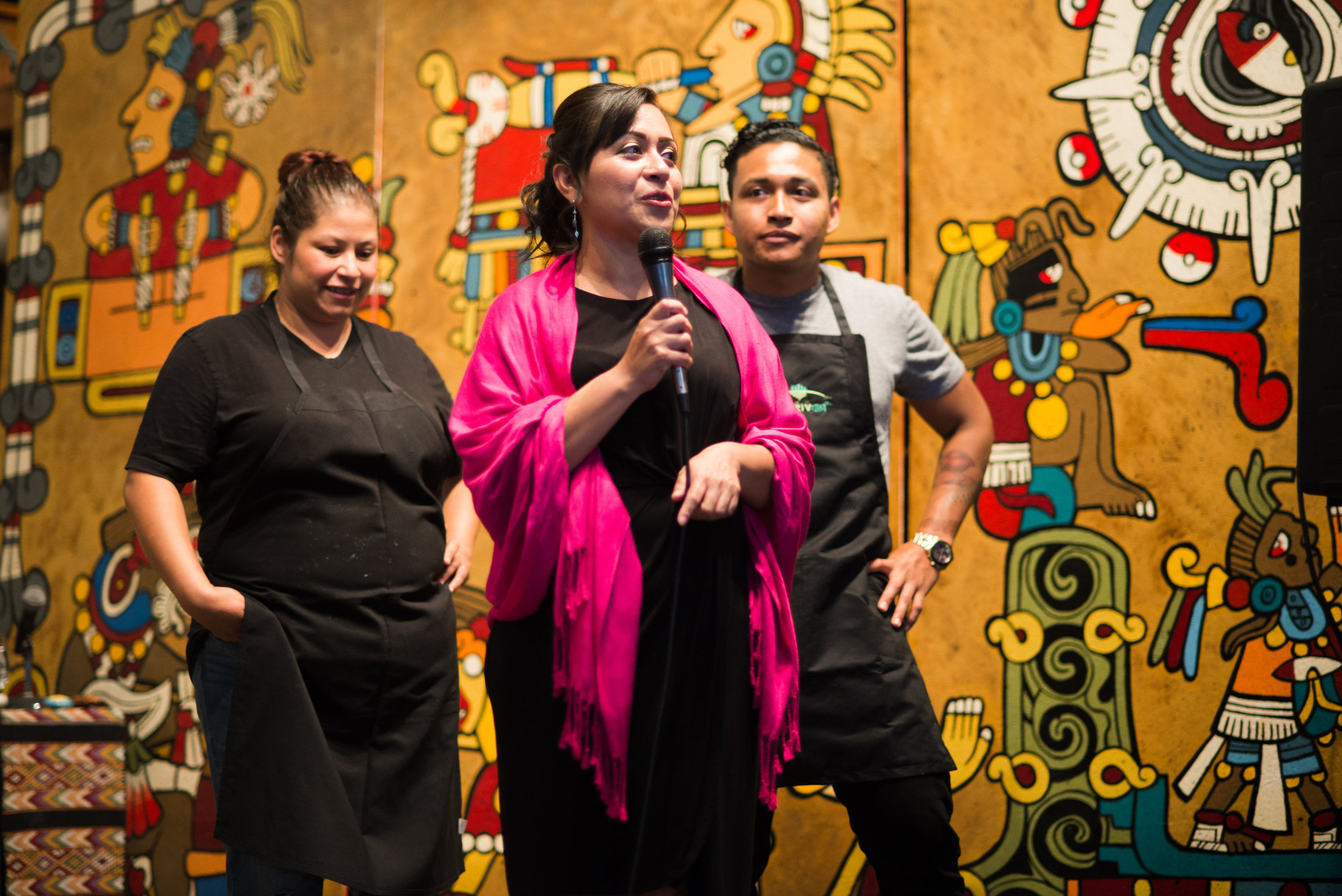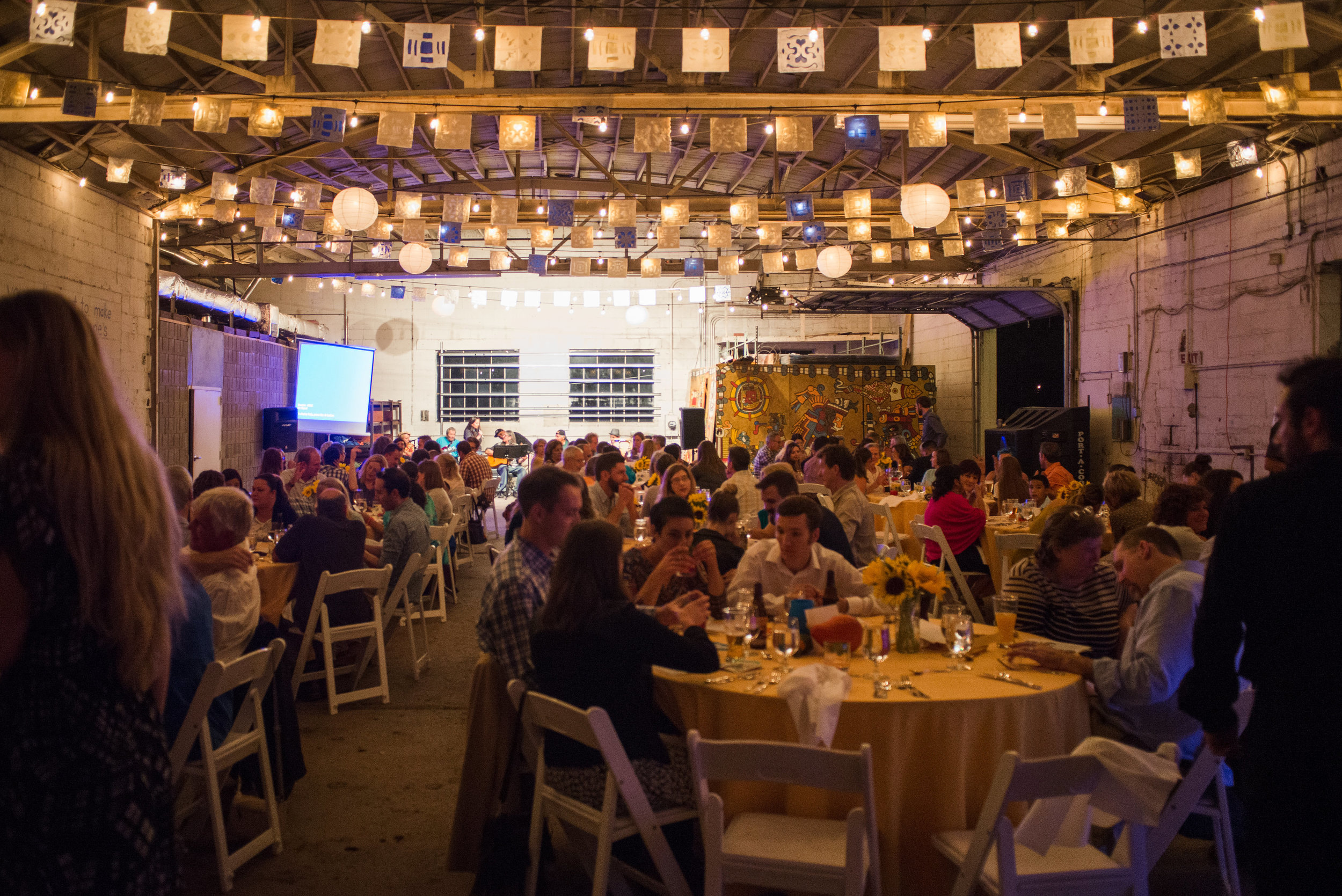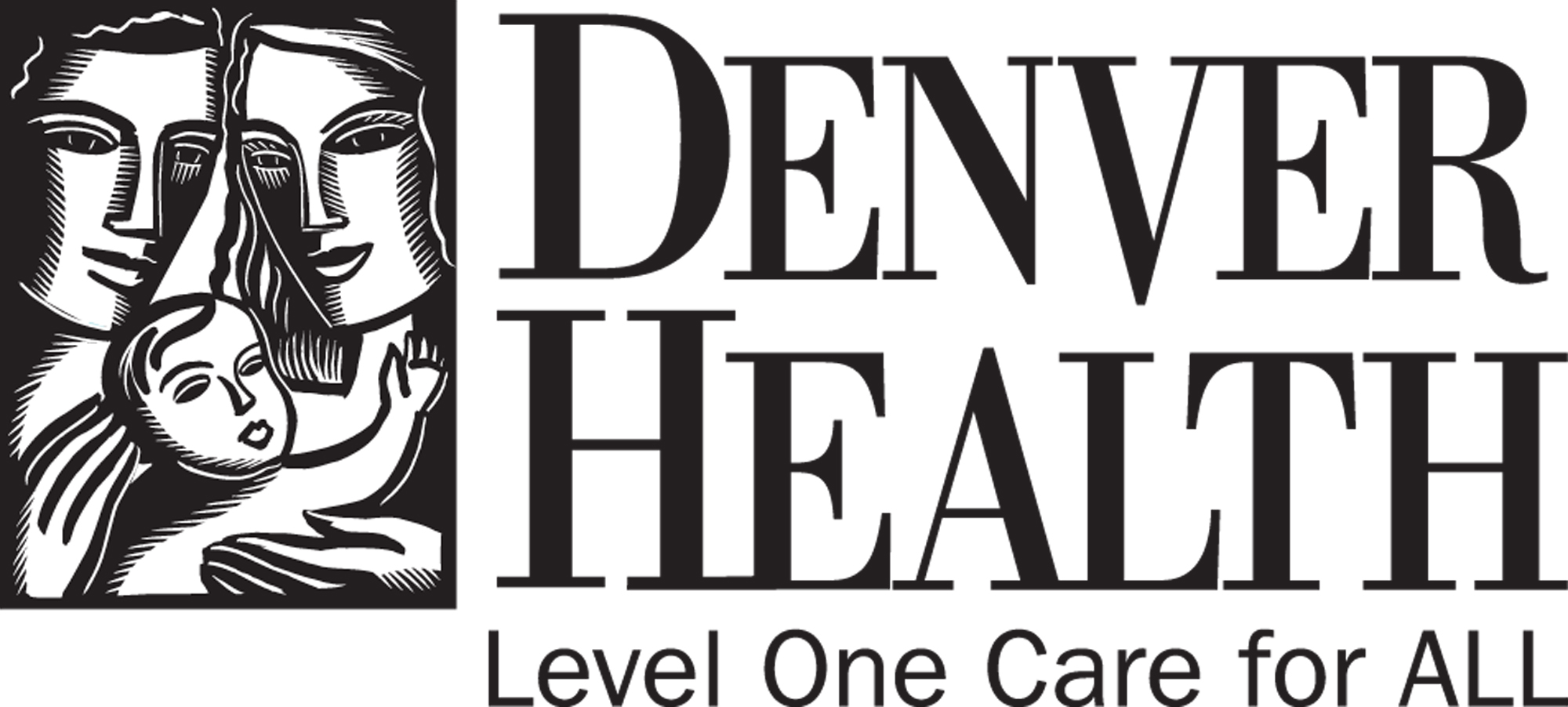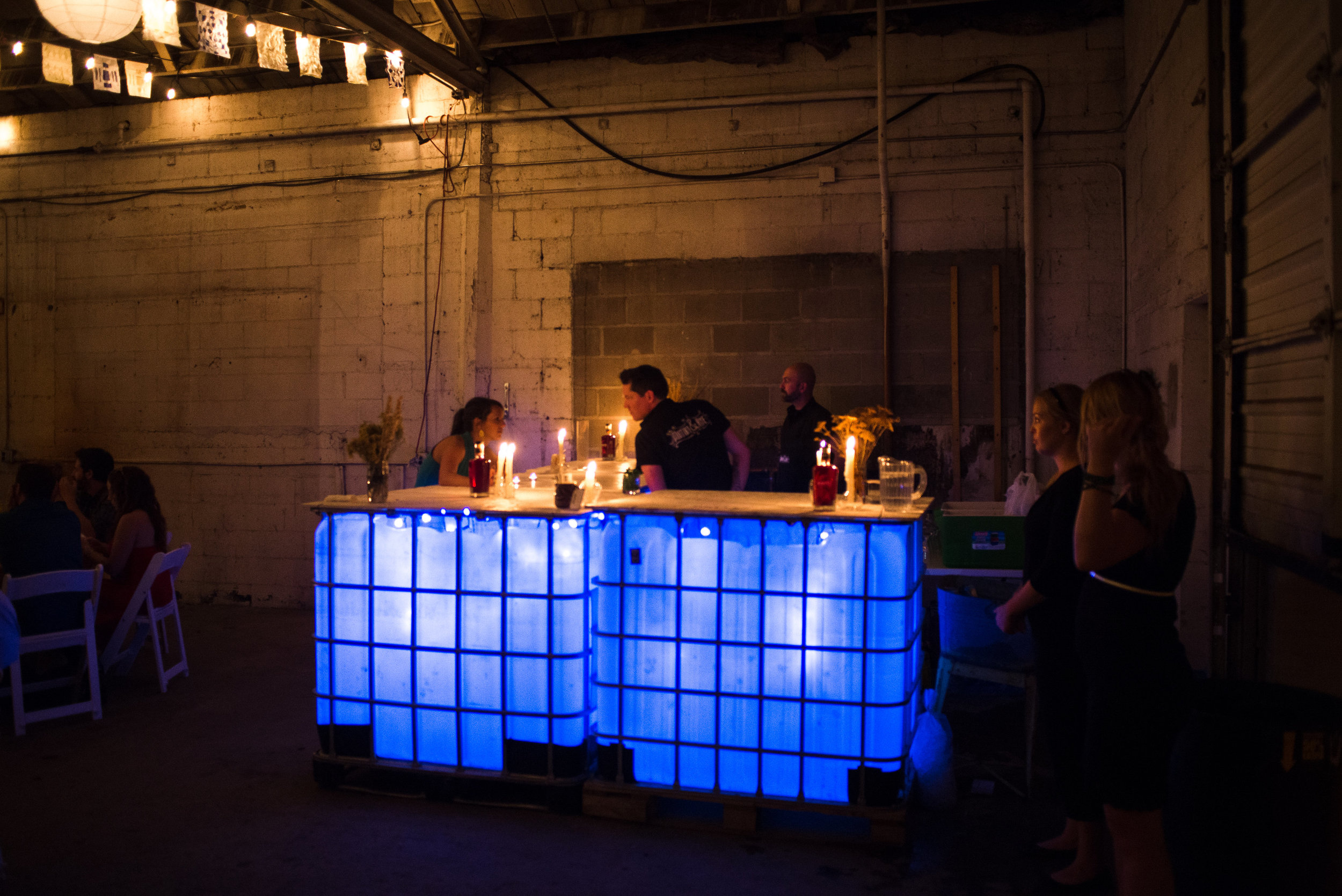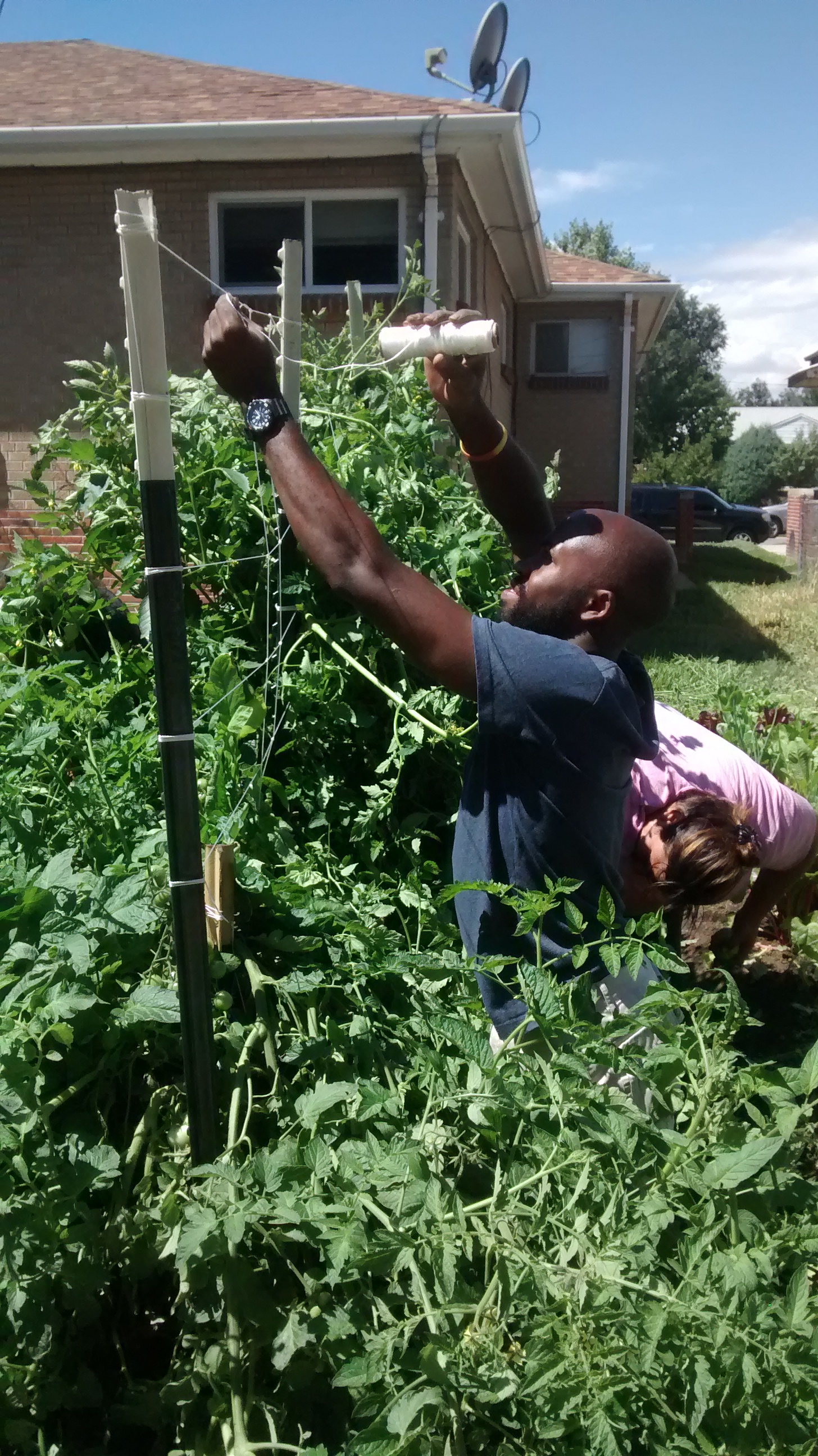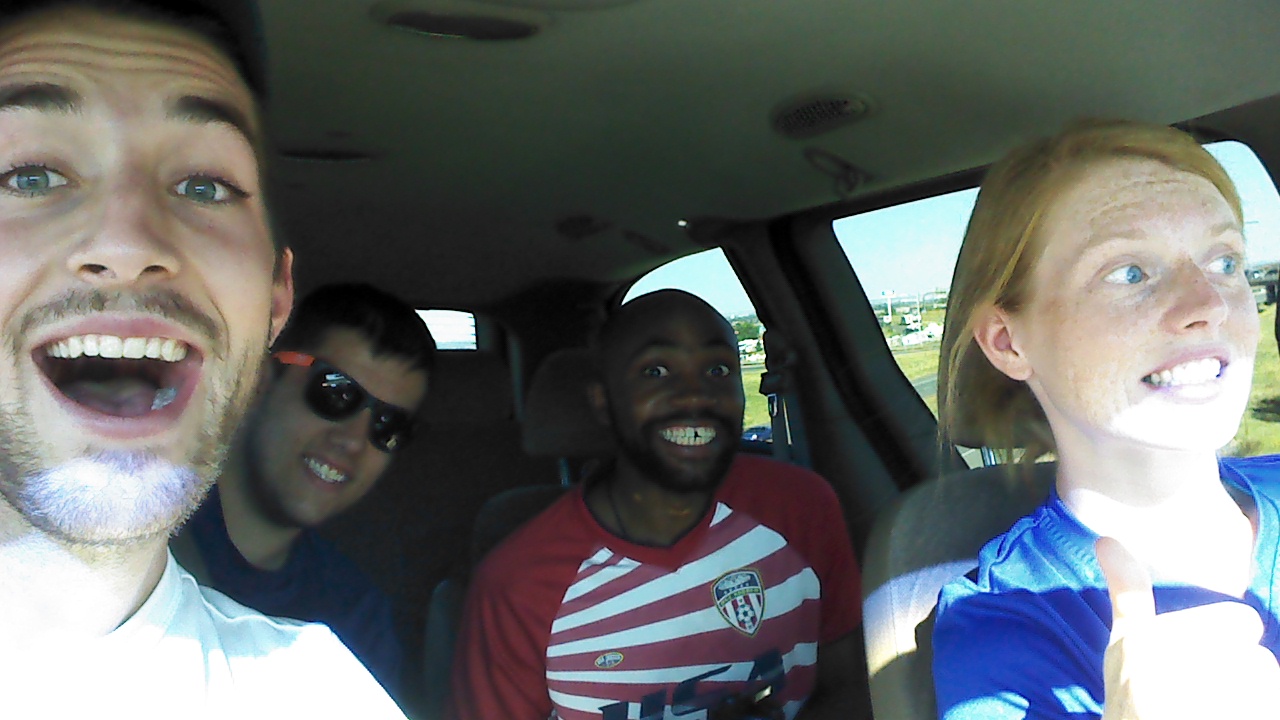
Re:Write
STORIES FROM THE FIELD, PROMOTORA RECIPES, AND CO-OP DEVELOPMENT LESSONS (PLUS SOME POLITICS AND HUMOR, TOO)
Starting with Listening
Asnake Deferse was one of those people that I remember first having a significant conversation with in La Tiendita, a community market we piloted this fall. I am certain that we had met before, but it was in La Tiendita, surrounded by bags of grains and coolers of vegetables that Asnake began to explain to me about Sun Valley, a Denver neighborhood close to Westwood.
The following post was written by Megan Lloyd about a new program at Re:Vision called the Sun Valley Real Food Basket program. Last night (December 2, 2015, Re:Vision held their very first distribution of the Real Food Baskets to over 80 SunValley families). Here is Megan's story, about starting new programs, food justice, and listening.
Asnake Deferse was one of those people that I remember first having a significant conversation with in La Tiendita, a community market we piloted this fall. I am certain that we had met before, but it was in La Tiendita, surrounded by bags of grains and coolers of vegetables that Asnake began to explain to me about Sun Valley, a Denver neighborhood close to Westwood.
Originally from Ethiopia, Asnake has been living in the Sun Valley Housing units with his wife and four boys for quite sometime now. He told me about the diversity of Sun Valley residents, the obvious food desert the people are living in, and his dreams of bringing culturally appropriate and healthy food to the neighborhood. “I have a car. But a lot of people don’t. There are people who take a lot of buses to Aurora to get food. This is expensive.”
With Asnake as our coordinator and voice, we have spent the last month surveying residents, partnering with other Sun Valley organizations, learning from other programs around the country, and talking to people about they want and need to come up with something called the Real Food Basket program.
The Real Food Basket program is a weekly basket of real food, free of processed junk or old cans that residents generally find at their local food banks. That means fruit, vegetables, grains, spices, and even milk and eggs. The first round of these baskets will be free, allowing us to give people the full experience without the risk.
After the pilot, boxes will cost anywhere from $12-$19 and residents can use their SNAP dollars to purchase them. We will include recipes and even have monthly cooking classes at the pick-up site. At our first distribution, a few of our coordinators will be doing free health screenings. We are hoping to connect other food initiatives in Sun Valley to create a collaborate cluster of people working to bring real food to the community and to all of Denver.
These sound like amazing things. And they are! But if I am being completely honest, I’m scared. I constantly wonder, “Do people even want this?” The reality is that Sun Valley is an incredibly diverse housing unit and sometimes I don’t even know where to begin. But I know that Asnake wants it, that he understands his community, and he believes this will make things better.
The key to Re:Vision’s model is working with people. When we first started planting in backyards, people thought that we were crazy. A full team of Promotores and 400 gardens later, residents are leading these programs, taking control of their health, and helping launch the Westwood Food Co-op.
So we start small. We start by eating sour pancake-like bread called injera and drinking thick cardamom coffee in Asnake’s home. We start by going to neighborhood meetings. We start by sitting down and talking with people about their stories, needs, and what they want for their own neighborhoods. We start by listening.
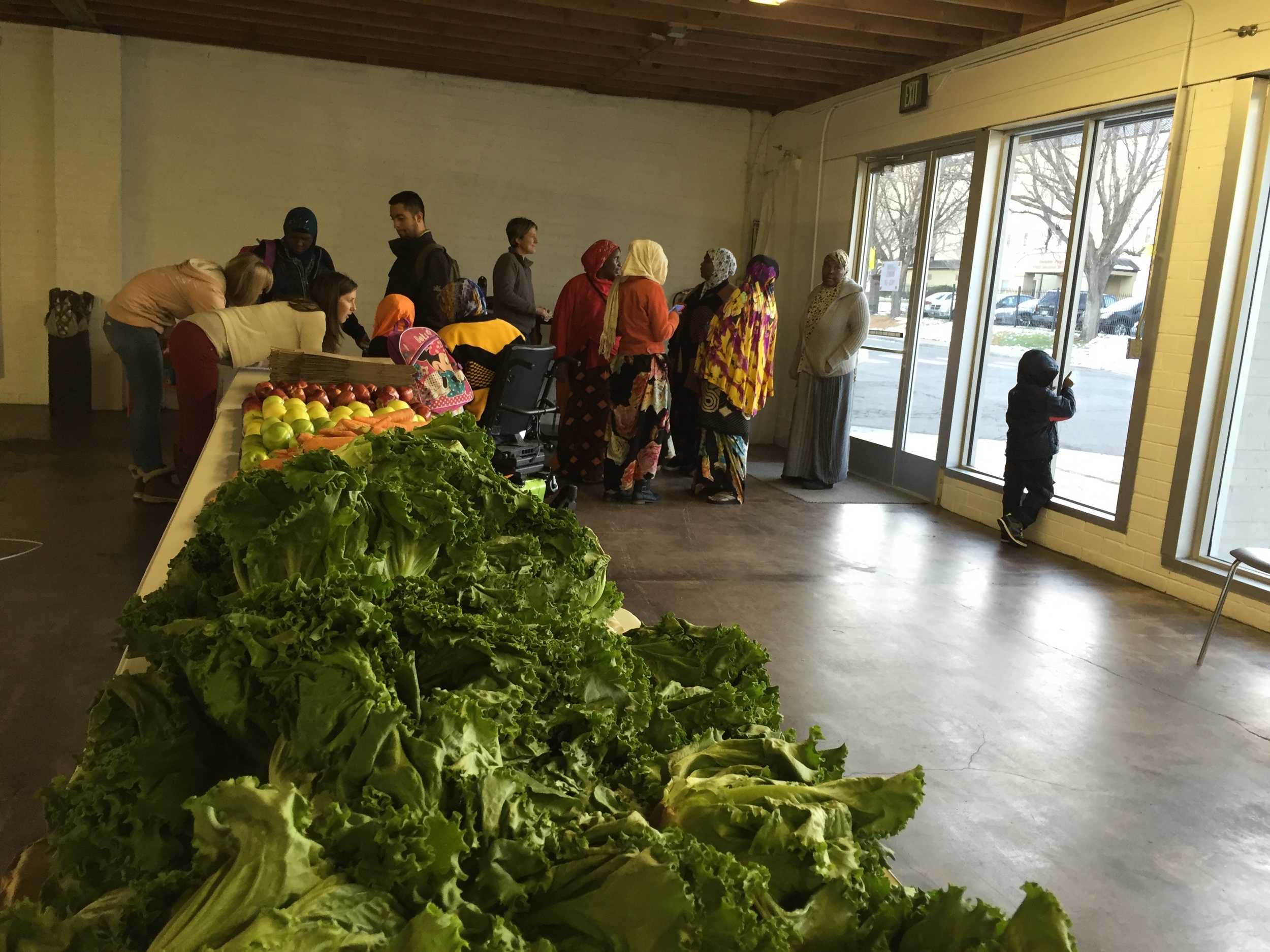








The Heart of our Kickstart
A few Wednesdays ago, I hesitated, and then pressed "submit."
That moment set off a 30 day count-down. The goal was to raise 50K to fill the inside of the warehouse that will become the Westwood Food Co-op with lighting, shelves, freezers, shopping carts, and if we could raise a little more, a patched roof.
A few Wednesdays ago, I hesitated, and then pressed "submit."
That moment set off a 30 day count-down. The goal was to raise 50K on Kickstarter to fill the inside of the warehouse that will become the Westwood Food Co-op with lighting, shelves, freezers, shopping carts, and if we could raise a little more, a patched roof.
To get things rolling, we threw off a farm-to-table event called De La Plata Al Planto. Remarkable leaders from across Denver pitched in their time, energy, and support. Woody Tasch from Slow Money was our MC. Dana Rodriguez from Work&Class and Edwin Sandoval from Sputino were our chefs. Dylan and J.P. our bar tenders. And a group of incredible corporate sponsors purchased tables and offered us in-kind support to help us transform our run-down warehouse into a beautiful event space. Our staff worked tirelessly to cut Mexican Fiesta flags out of tissue paper for days. Our videographer super vacuumed the entire warehouse floor. David never stopped worked on ladders and rooftops to prep the site. And our very own Eric became a star electrician the day of the event!
The effort was inspiring, and to sit with so many passionate people helped me see in full color what we do every day - come together to drive a movement by everyone for everyone.
At the event - we raised $9K directly on the Kickstarter campaign platform, and additional donations went towards putting on the event and covering the costs of the campaign (but because they were checks could not be directly input into the credit card system). Together as a community, we are creeping closer and closer to our 50K goal, but we still have a ways to go.
You and this community - you are our heart. And we need you now. Here are two fast ways you can help:
1. This next week, the community is rallying together for another fundraiser, a Kickstarter Zumbathalon to dance their way to 50K. Join us this next week on October 19, 6-8 pm at 3738 Morrison Rd Denver CO 80219 to show your support, and help us spread the word about this campaign.
2. Take 90 seconds right now to write your friends, tell your neighbors, and send your staff an email.
Thank you thank you thank you for absolutely everything that you have done. Without the amazing support we have received so far, we won't be where we now are.
We have nine days left! Let's keep it roaring! And enjoy the photos!
A special thank you to our event sponsors, our amazing volunteers, and partners:
- Alpine Bank
- Assured Benefit Solutions
- Avery Brewing
- Colorado First Bank
- The Colorado trust
- Crystal River Meats
- Denver Health
- Denver Water
- FirstBank
- Kin Collective
- Mutiny&Rye
- New Belgium Brewing
- Noosa Yogurt
- Ready Foods
- Suerte Tequilla
- WholeFoods
- Work&Class
- Anna Jones
- Barb Frommell
- Edwin Sandoval
- Grupo Tlaloc
- Jon Romero Band
- Santiago Jaramillo
Te Necesitamos! (We need YOU)
We need you.
For the last six years, Re:Vision has worked for better food access for Westwood. And right now, the community is very very close to opening the Westwood Food Co-op, proving to the country that community-owned solutions can conquer food deserts.
We need you.
For the last six years, Re:Vision has worked for better food access for Westwood. And right now, the community is very very close to opening the Westwood Food Co-op, proving to the country that community-owned solutions can conquer food deserts.
This is HUGE. But we can't do it without you.
We have launched a crowd-funding campaign to take us the home-stretch to opening the store. And the only way we're going to make it to the $50K goal is if all of our closest allies - you - share the word. Tweet your friends, nudge your neighbors, praise our work loudly at your local coffeeshop, whatever creative ideas you can come up with, let's rally the support needed to make this happen.
Below, we have included some tips on how to get the word out. The two minutes it will take to share our campaign right now could have an enormous impact on whether we make our Kickstarter goal.
Thank you for all of your support, we have only made it this far because of each and every one of you.
In solidarity,
your friends at Re:Vision
TWEET THIS:
Help @Revision_Coop launch #Denver's first #foodcoop grocery store, and put an end to the #fooddesert! http://ow.ly/SRk7g
SHARE THIS:
Re:Vision and the Westwood community need you! Together, we're crowd-funding $50k to launch the Westwood Food Co-op - the very first food cooperative of its kind that is owned and operated by a community living in a food desert. Help them by sharing this campaign, and get sweet perks like a voice message from Denver Mayor Michael Hancock or a membership! https://www.kickstarter.com/projects/westwoodfoodcoop/launch-the-westwood-food-co-op-to-feed-food-desert
You know what's great...we made it to eight!
Eight years ago today,
they announced that they would stay.
There was a bike trip,
and a party hosted by Rip,
but another vision was under way.
We wrote you all a poem to celebrate Re:Vision's eighth birthday. Congratulations to everyone who have gotten us this far, and here's to many more to come. Thank you all for taking the time, to rehash the journey with us through a playful rhyme!
Eight years ago today,
they announced that they would stay.
There was a bike trip,
and a party hosted by Rip,
but another vision was under way.
Place-based solutions, Eric said.
Joseph knowingly nodded his head.
So with a vision revisioned for the people who toil,
together, two founders dug their hands into the soil.
There was also this neighborhood
That had been a bit misunderstood.
Grocery stores wouldn’t open there.
And it seemed as though most of Denver didn’t care.
But a vision revisioned is a site to see;
especially when it’s owned by a community.
And so a group of people who were once told that they can’t
Went door to door and neighbor to neighbor to teach each other to plant.
They planted seeds that every year they would sow.
They planted ideas that began to grow and grow.
Just seven backyard gardens was the start.
Now in our eighth year, over 400 families participate with heart.
And would you ever even guess,
But a grocery store they’re starting, yes!
Such a power is an idea whose time has come,
When we realize we are only as powerful as our collective sum.
Join us today to celebrate.
Have you heard, we’ve made it to eight!
And here’s a toast to many more,
that we will revel in our new community store!
EL OTOÑO ES LA NUEVA PRIMAVERA/ Fall is the new spring!
La mayoría de la gente piensa en la jardinería como un evento de solo una vez - se planta en la primavera y se cosecha una vez en el otoño, y eso es todo. En realidad, algunas estrategias diferentes pueden ayudarle a usted y a su familia a cosechar los beneficios de su jardín varias veces durante toda la temporada!
Most people think of gardening as a one-time event - you plant in the spring, harvest once in the fall, and that’s it. Actually, a few different strategies can help you and your family reap benefits from your garden multiple times throughout the season!
¡Planta de una cosecha al final de la temporada y cosecha dos veces el beneficio de tu jardín!
La mayoría de la gente piensa en la jardinería como un evento de solo una vez - se planta en la primavera y se cosecha una vez en el otoño, y eso es todo. ¡En realidad, algunas estrategias diferentes pueden ayudarle a usted y a su familia a cosechar los beneficios de su jardín varias veces durante toda la temporada! En primer lugar, se puede practicar la siembra sucesiva en la que se planta un poco de un determinado cultivo cada dos semanas más o menos, como zanahorias, rábanos o nabos, y tendrá cosecha durante todo el verano. ¡En segundo lugar, se puede cosechar las hojas individuales en un momento de su lechugas, espinacas, col rizada y acelgas para que la planta pueda crecer de nuevo, y usted puede tener ensaladas frescas durante todo el verano! ¡Por último, se puede plantar una cosecha de fines de temporada! Contrariamente a la creencia popular, la primavera no es la única temporada de siembra. Durante los mediados o finales de verano es un momento ideal para plantar semillas para una segunda temporada de jardinería que puede ser tan productivo como sus principales plantas de principios de la primavera. ¡Estos crecen bajo el suelo a lo largo de los últimos días más calurosos de la temporada, y emergen justo a tiempo para las temperaturas más bajas en septiembre y octubre, listos para una hermosa cosecha de otoño! Puede parecer extraño el inicio de nuevas semillas cuando mucho de su verano sigue cultivando la calabaza y tomates, pero vale la pena el esfuerzo. Cualquier cosa que le guste las temperaturas primaverales más frescas son buenos cultivos para esta técnica de siembra en la temporada tardía. Los candidatos son las zanahorias, rábanos, puerros, lechugas, guisantes, cebolletas, la espinaca, la acelga, brócoli, y rúcula.
¡Así que recuerde, el final del verano no es el final de la temporada de crecimiento! ¡Mantenga su jardín creciendo mediante la plantación de algunos de estos cultivos de fines de temporada, y háganos saber cómo le está yendo al compartir algunas fotos!
FALL IS THE NEW SPRING!
Plant a Late Season crop and reap twice the benefit from your garden!
Most people think of gardening as a one-time event - you plant in the spring, harvest once in the fall, and that’s it. Actually, a few different strategies can help you and your family reap benefits from your garden multiple times throughout the season! First, you can practice successive planting in which you plant a little bit of a certain crop every two weeks or so, such as carrots, radishes or turnips, and harvest throughout the summer. Secondly, you can harvest individual leaves at a time from your lettuces, spinach, kale and chard so that the plant can grow back, and you can have fresh salads throughout the summer! Lastly, you can plant a late season crop! Contrary to popular belief, spring is not the only season for planting. Mid to late summer is an ideal time to plant seeds for a second gardening season that can be as productive as your major early spring plantings. They’ll grow under the soil throughout the last hottest days of the season, and emerge just in time for cooler temperatures in September and October, ready for a beautiful fall harvest! It may seem odd to be starting new seeds when a lot of your summer produce like squash and tomatoes are still cranking, but it's well worth the effort. Anything that likes cooler spring-like temperatures are great crops for this late season planting technique. Great candidates are carrots, radishes, leeks, lettuce, peas, scallions, spinach, chard, broccoli, arugula.
So remember, the end of summer is not the end of the growing season! Keep your garden growing by planting some of these late season crops, and let us know how you’re doing by sharing some pictures!
FERTILIZANTE – ¿POR QUE? ¿COMO Y CUANDO?/FERTILIZER - WHY, WHEN AND HOW?
Es posible que ya haya recibido su dosis de fertilizante de su Promotora la semana pasada, y es posible que se pregunten exactamente de qué se trata todo esto. Hay una gran cantidad de productos y a veces puede ser confuso entender el por qué, cómo y cuándo debemos aplicar los fertilizantes. Re:Vision está aquí para ayudar!
You may have received your dose of fertilizer from your Promotora last week, and you may be wondering just what all of that is about! There are a lot of products out there, and sometimes it can be confusing to understand why, how and when we should apply fertilizers. Re:Vision is here to help!
FERTILIZANTE – ¿POR QUE? ¿COMO Y CUANDO?
Es posible que ya haya recibido su dosis de fertilizante de su Promotora la semana pasada, y es posible que se pregunten exactamente de qué se trata todo esto. Hay una gran cantidad de productos y a veces puede ser confuso entender el por qué, cómo y cuándo debemos aplicar los fertilizantes. Re:Vision está aquí para ayudar!
POR QUE?
Las plantas crecen utilizando la energía del sol combinado con nutrientes extraído de la tierra. Debido a que la materia orgánica en el suelo tiene nutrientes como una esponja, la tierra que es fértil y con buen desagüe, y que regularmente es enriquecida con fertilizante a menudo tiene un suministro razonable de nutrientes para las plantas. Pero a veces, son necesarias algunas modificaciones adicionales para asegurar que todas las cantidades necesarias de nutrientes estén disponibles para nuestros cultivos. Los tres nutrientes principales que la mayoría de las personas están familiarizadas con son el nitrógeno (N) el fósforo (P) y el potasio (K). En términos generales, el nitrógeno es responsable de producir crecimiento de las hojas y es el principal químico implicado en la fotosíntesis. El nitrógeno es considerado uno de los nutrientes de las plantas más importantes, a menudo el factor decisivo más importante en el crecimiento de la planta y el rendimiento del cultivo. Usted puede saber si su planta carece de nitrógeno si ve un color amarillo en las hojas y un poco de marchitamiento. El fosforo ayuda en la madurez de la planta, apoya el desarrollo vigoroso de las raíces, tallos, flores y frutos. Es la pieza fundamental en todas las plantas vivas. Las plantas deficientes en fósforo suelen ser muy pequeñas, con hojas de color púrpura oscuro y venas que son visibles. El potasio fortalece la planta en general, proporcionando resistencia a las enfermedades y reduciendo el estrés de la planta. El potasio permite que las plantas desarrollen raíces fuertes, tallos gruesos, sanos y grandes, fruta abundante. Las plantas que necesitan en potasio a menudo desarrollan los tallos débiles, tallos y frutos pequeños y semillas arrugadas.
CUANDO?
La fertilización es especialmente útil desde el principio, cuando las plantas están haciendo un crecimiento rápido. Sin embargo, un aumento de nutrientes, conocido como la 'alimentación' de la planta, se puede necesitar de nuevo cuando las plantas están a punto de dar fruta. Es por esto que el fertilizante se distribuyó en las últimas semanas, justo cuando empezamos a ver los primeros tomates y pimientos haciendo progresos. Mientras que diferentes plantas tienen diferentes necesidades, mira la siguiente tabla para recomendaciones de fertilización para algunos de los cultivos más comunes: (nota: algunos cultivos comunes como habas, rábanos y zanahorias no figuran ya que generalmente no son ‘pesados' y por lo tanto no requieren mucho fertilizante adicional.)
COMO?
Los fertilizantes vienen en muchas formas, pero el fertilizante repartimos es hidrosoluble. Eso significa que simplemente se puede mezclar con un poco de agua y se aplica directamente al suelo alrededor de la base de la planta, por lo que las raíces se comen los nutrientes! Usted puede poner una cucharada a todas sus plantas que están dando fruto - tomates, pimientos, calabaza, melón, brócoli, etc.!
En general, el fertilizante puede ser un tema complicado, pero es importante recordar que la mejor manera de 'alimentar' sus plantas es con un suelo fuerte, balanceado y saludable! Si usted necesita un poco de fertilizante adicional para algunas de sus frutas y verduras, use ingredientes naturales de la mejor manera que pueda, y utilícelo mínimamente! Esperamos que esta explicación de los nutrientes principales que las plantas necesitan, y estos consejos rápidos sobre el fertilizante sea útil. Pregúntele a su Promotora si necesita más ayuda con los fertilizantes!
FERTILIZER - WHY, WHEN AND HOW?
You may have received your dose of fertilizer from your Promotora last week, and you may be wondering just what all of that is about! There are a lot of products out there, and sometimes it can be confusing to understand why, how and when we should apply fertilizers. Re:Vision is here to help!
WHY?
Plants grow using energy from the sun combined with nutrients taken from the soil. Because the organic matter in soil holds nutrients like a sponge until they are needed by plants, soil that is fertile, well-drained, and regularly enriched with compost often holds a reasonable supply of plant nutrients. But sometimes, additional amendments to our soil are needed to ensure all the necessary amounts of nutrients are available for our crops. The three major nutrients that most people are familiar with are nitrogen (N) phosphorus (P) potassium (K). Generally speaking, Nitrogen is responsible for producing leaf growth and is the main chemical involved in photosynthesis. Nitrogen is considered one of the most important plant nutrients, often the most important deciding factor in plant growth and crop yield. You can tell if your plant is lacking nitrogen if you see a lot of yellowing in the leaves and a bit of wilting. Phosphorus aids in plant maturity, supports the vigorous development of roots, stems, blossoms and fruits. It is the major building block in all living plants. Plants deficient in phosphorus are usually dwarfed and spindly, with dark purple leaves and veins that are visible. Potassium strengthens the overall plant, providing resistance to disease and reducing plant stress. Potassium enables plants to develop strong, thick stems, healthy roots and large, plentiful fruit. Plants in need of in potassium often develop weak stems and stalks, small fruit and shriveled seeds.
WHEN?
Fertilizing is especially helpful early on, when plants are making fast new growth. However, a nutrient boost, known as ‘feeding’ the plant, may be needed again when plants are just about to fruit. This is why fertilizer was distributed in the last few weeks, just when we start to see the first tomatoes and peppers making headway. While different plants have different needs, check out the table below for fertilizer recommendations for some of the most common crops: (notice some common crops like beans, radishes and carrots aren’t listed because they generally aren’t ‘heavy feeders’ and thus don’t require much additional fertilizer.)
HOW?
Fertilizers come in many forms, but the fertilizer we handed out is water soluble. That means it can simply be mixed with a bit of water and applied directly to the soil around the base of the plant, so the roots will eat up the nutrients! You can put about a spoonful next to all of your plants that are fruiting - tomatoes, peppers, squash, melons, broccoli, etc.!
In general, fertilizer can be a complicated issue, but its important to remember that the best way to ‘feed’ your plants is to have strong, balanced, healthy soil! If you need a little extra fertilizer for some of your fruits and veggies, stick to the all natural stuff as best as you can, and use minimally! We hope this explanation of the major nutrients plants need, and these quick tips on fertilizer were helpful. Ask your Promotora if you need more assistance with fertilizer!
Que te detiene ... para conocer a un vecino o ayudar a un amigo?
Siga leyendo para averiguar cómo algunas personas están quitando las barreras para levantarse unos a otros para construir una mejor comunidad:
Siga leyendo para averiguar cómo algunas personas están quitando las barreras para levantarse unos a otros para construir una mejor comunidad:
David De Santiago y su esposa Irma viven en una casa cubierta de murales a una cuadra abajo de la Westwood Food Co-op. Si alguien quiere que se le recuerde el poder de hacer crecer un jardín del patio trasero, deben probablemente pasear por este patio. El jardín del patio trasero de De Santiago comienza con una trama que consiste en filas interminables de pimientos - su favorito - y continúa con una segunda parcela de filas ordenadas de maíz, tomates, guisantes, zanahorias, rábanos, repollo, calabaza y calabacín. En cada pulgada puede crecer un vegetal.Pero la parte del jardín del patio trasero de De Santiago que más me impresiona es la cerca
La cerca del jardin de David es toda de madera reciclada y reutilizada, que alcanza la altura de la cintura, y en el medio de cada poste es una brecha lo suficientemente amplia como para adaptarse a una persona de tamaño mediano. Es la cerca más cuidadosamente e intencionalmente "defectuosa" que he visto en mi vida.
Así que le preguntamos a David al respecto la semana pasada: "David, ¿qué pasa con la cerca?"
Él respondió: "Las grandes brechas son para que la gente pudiera ver lo que estaba haciendo, y que vean lo que es posible."
"Pero ¿qué pasa si alguien roba su producto?" Respondimos. Él respondió con su firme sonrisa, una sonrisa que es a partes iguales humildad y sabiduría, "bueno, yo estaría encantado de saber que estaban comiendo algo sano.”
David es un héroe no reconocido de la comunidad, uno de los muchos que nosotros ponemos a trabajar todos los días en Westwood.
Otro vecino es Phil, un jubilado que visitó nuestra oficina sin avisar a las 9 de la mañana después de la primera reunión de Diseño de la Comunidad Westwood Food Co-op hace unas semanas. Me sentó en frente de su portátil y su perro Raif, y declaró: "Quiero ser voluntario 10 horas a la semana para ir de puerta en puerta y reclutar a cada persona en este barrio para unirse a la Westwood Food Co -op. Esta es una gran cosa, y necesitamos a todos a bordo “.
Al oírle hablar, mi corazón salió de la habitación para ir a dar vueltas de victoria corriendo alrededor del edificio del Westwood Food Co-op .
Phil y David están en buena compañía. Otros miembros de la comunidad se ofrecen como voluntarios para dar clases de cocina saludable, tales como el uso de flores de calabaza para hacer un toque saludable y delicioso en la quesadilla. Y hay vecinos como Karimme que nunca se pierda una sola de estas clases porque quieren mejorar su salud y la salud de sus hijos.
Mi mandíbula gotea al trabajar en Re: Vision aproximadamente una vez al día.
La gente siempre nos pregunta por qué, de todos los lugares, ¿trabajas en Westwood? Hay unas razones prácticas - Westwood era tierra agrícola una vez, por lo que los jardines del patio trasero se hacen especialmente bien aquí. Pero hay una razón mucho más profunda, y es esta: Westwood es una comunidad con un corazón profundamente arraigado. Es una comunidad impulsada por el poder del pueblo. Es una comunidad en la construcción de un modelo de salud y resistencia a seguir por otros.
Durante años, Westwood también ha sido un barrio aislado del resto de Denver. Pero el poder del pueblo que he escrito en esta carta puede extenderse mucho más allá del código postal de Westwood. Y al igual que la cerca de David, necesitamos que nos ayuden a construir una cerca que invite a la gente en lugar de alejarla; una cerca que muestre a otros barrios y ciudades lo que es posible.
Cualquiera de ustedes que leen este boletín puede participar de muchas maneras. Necesitamos voluntarios que nos ayuden a vender membresías de la cooperativa en los eventos de fin de semana o los sábados. Necesitamos voluntarios que nos ayuden a pilotear un mercado educativo de productos llamado "La Tiendita" (pequeña tienda) que estaremos abriendo en menos de dos semanas. Necesitamos voluntarios para ayudar con la difusión de miembros para el Westwood Food Co-op. Necesitamos que todos los que lean esta carta se inscriban para ser miembros.
Necesitamos que todos ustedes, a su manera, se unan a nosotros en la construcción de una economía local más inclusiva y saludable; porque los Davids, las Irmas, los Phils y las Karimmes no pueden hacerlo solos.
Tenemos que hacerlo juntos.
Gracias, como siempre, por la lectura y espero verlos enalgunos de nuestros próximos eventos, clases, o en La Tiendita este mes de agosto.
Intensamente
Cat
Estamos en todas las noticias!
Re: Vision ha estado en todas las noticias últimamente! Entravision y CBS Noticieros locales transmitieron historias magistrales en los jardines de residentes en Westwood. Y no te pierdas la poderosa charla TEDx del co-fundador de Re: Vision Eric Kornacki en la construcción de economías basadas en el lugar! Póngase al día con estas historias cautivantes de cómo un desierto de alimentos se está convirtiendo en un líder en la construcción de economías basadas en el lugar en Denver.
La Tiendita, su nuevo mercado de productos está abriendo!
A partir de las 9 de la mañana del día 10 de agosto, estaremos llevando a cabo una ceremonia de apertura con un desayuno para celebrar La Tiendita, un mercado que estamos poniendo a prueba para centrarse en la educación de los consumidores acerca de dónde viene la comida. Estará abierto unos días de la semana hasta el 24 de octubre de 2015. La Tiendita también será un lugar para probar los productos que desea ver l en el Westwood Food Co-op ... y mucho más. Aprenda más y venga a visitarnos y comprar!
La apertura de una cooperativa de alimentos es como tener un bebé. Se requiere una gran cantidad de tiempo, recursos, energía y amor. Nosotros en Re: Vision estamos lanzando una campaña de capital este otoño para recaudar $ 200,000 para ayudar a que nuestro bebé venga a la vida. Hasta este punto, nosotros hemos cubierto casi la totalidad de los fondos necesarios para comprar la propiedad y rediseñar el edificio - pero necesitamos su ayuda para recaudar fondos para obtener la cantidad restante para llenar la tienda y abrir las puertas. Si usted todavía no ha donado a Re: Vision, por favor haga clic abajo para ser un donante mensual. Incluso sólo cinco dólares al mes nos ayudarian a estar mucho más cerca. Gracias, gracias, gracias.
¿Qué se está cocinando en La Cocina?
Julio fue el primer mes en que La Cocina celebró clases de una sola clase, desde panqueques saludables a cómo preparar ensaladas como plato principal ... y han sido un gran éxito! Este mes de agosto, incluso hay más clases que ofrecen voluntarios, miembros de familia, y potencialmente (con un poco más de empuje) nuestro propio Eric Kornacki. No se demore en inscribirse para tomar una clase, enseñar una clase, o incluso alquilar el espacio para un evento de la comunidad. Para obtener más información, visite nuestra página aquí.
Reflections of one year in Westwood
My name is Tyler Schrock, and this week will be my last week at Re:Vision. I am writing to tell you a bit about my story working here and in Westwood, and why I will miss being a part of this community.
My name is Tyler Schrock, and this week will be my last week at Re:Vision. I am writing to tell you a bit about my story working here and in Westwood, and why I will miss being a part of this community.
I joined Re:Vision as part of DOOR Denver – a service organization focused on placing young adults at urban non-profits. DOOR houses them with other volunteers and challenges them to live simply. For my work, I spend two days each week with Re:Vision, working on the website and helping them with marketing. Two other days are spent at The Bridge Project, which is also in Westwood. The Bridge Project is an afterschool program and summer day camp that approaches education from a social work perspective, focusing more on the needs of kids and families instead of strictly grades or homework.
Over the past 12 months with both of these programs, I have quickly begun to learn about Westwood and the community. Half of my time has been spent with kids, helping with math homework, sitting in as a teachers aid for rowdy classrooms, and helping to prepare snacks for kids between their seven hour school day and evening tutoring. Other days, I was helping with online messaging about backyard gardens, building a new website for the Westwood Food Co-op and learning how Re:Vision has been reaching out to the same families and children that I have been working with as a tutor. Even though I lived a few miles away on West Colfax, I developed a connection to this community and the growth that has been so tangible here.
Here are some things that I have grown to love and will sorely miss as I head back to my home in Ohio:
- Den-Mex food: Green Chile, fresh tortillas and a bit of spice. These are some of my new favorite foods
- A bi-lingual office: My Spanish is pretty rough – I do my best to keep up with the conversations here at the office and around town.
- Our backyard garden: The house where I live is actually part of the Re:Vision backyard gardening program, and I am always amazed by how much our little garden supplies us with a ton of fresh food, although sometimes the swiss chard hit us all at once J
- Seeing the Bridge kids around town: During my bike commute, I often saw kids from the Bridge Project around town, in the park or walking around with their friends. Hearing them call me “Mr. Tyler” will stay with me long after I've left.
- Getting my hands dirty: With a job title involving the website, you might be surprised at how often I found myself out of the office. At different points, I spent assembling furniture for the new kitchen, inventorying thousands of glass eyeballs from the new property or helping with manure deliveries around town.
I’m moving back east to be close to my family, but I will miss the Westwood community and so many folks from Re:vision, the Bridge Project and the DOOR program. Thank you all for your dedication to this work, thank you Re:Vision for making me feel at home, and thank you Westwood for being a charismatic leader in agriculture and community organizing.
I will miss this place.
CO-OP REAL TALK: What The Westwood Food Co-op Looks Like
Over the past few weeks, months, even years, you have heard us talk about the W-F-C; the Westwood Food Co-op. And last month in June, we announced that after all of this time Re:Vision is working with the WFC to OPEN MEMBERSHIP TO THE PUBLIC! This meant that for the first time ever, anyone can become a member of the Westwood Food Co-op.
When we said "opening membership to the public," a few people imagined we were opening up a store that looked like THIS.
Over the past few weeks, months - even years - you have heard us talk about the W-F-C; the Westwood Food Co-op. And this past June, we announced that after all of this time Re:Vision is working with the WFC to OPEN MEMBERSHIP TO THE PUBLIC! This means that now anyone can become a member of the Westwood Food Co-op.
When we said "opening membership to the public," a few people imagined we were opening up an actually store that looked like THIS.
Or THIS.
Or maybe even THIS.
They were thinking something along the lines of a bright newly constructed food co-op, a community grocery store with locally sourced food, cool new products, and friendly people ready to check out purchases with smiles and recycled packaging bags.
The reality is, the 74,000 square ft. junkyard that Re:Vision purchased to turn into the Westwood Food Co-op has been going through a major transformation - of clearing out slashed tires and sticky keyboards and scrap metal and rust peels, of knocking down wobbly old warehouses and stripping down buildings to their bones through sweat, and dirt, and muscle power until we made it to THIS...
Open, clear, space with people at the center. And we have a word for this space. It's called the ground floor, or the foundation.
Just getting here, to this near "blank" slate has been beautiful...nay it's been stunning. Neighbors have been walking curiously around a space - that in all of the years they they have lived here - that they are actually seeing for the first time (this junkyard has been closed off to the neighborhood with black tarp shielding junk piles throughout its history). To think that it could now be something else; and not just something but a community hub for food, health, and recreation is exciting but also a great unknown.
What will a new food co-op look like? Will it be bright with colors and a big sign overhead? Will it have a statue of a tomato or an outdoor fruit stands?
REAL TALK.
The answer is, we don't know. No one at Re:Vision and none of the WFC board know what the WFC will look like...but you do. In becoming a member of the WFC you have a voice on what the WFC will look like, its members, its heart, and its soul.
Speaking as the Communications Director, it has been difficult to explain this, that this kind of membership is a little different than becoming a member at REI and walking into a physical store in a chain of stores and purchasing a purple carabiner. This membership means ownership. This membership means joining a group of people who are excitedly walking around the ground floor and seeing what is possible in a place where it hasn't been possible before.
So join us. We have a number of upcoming meetings and events to begin designing the WFC together. Write down these dates, invite your friends, and let's walk across the ground floor together.
- The Frida Pop-Up Show - Come to visit the WFC space, connect with community members over art, learn a little bit more. July 11, 4-10pm at 3735 Morrison Rd. Denver, CO 80219. RSVP on Facebook Here.
- The Community Design Meeting (pt 1) - Come to give ideas and feedback to the Studiotrope team who will be working to compile all input for the WFC building designs. July 16, 4-7pm, at 3735 Morrison Rd. Denver, CO 80219. RSVP on Facebook Here.
- The first Westwood Food Co-op General Meeting - Learn what it means to be part of the WFC, how board elections will happen, and who are your co-member/owners! July 23, 6-8pm, at 3735 Morrison Rd. Denver, CO 80219. RSVP on Facebook Here.
- The Community Design Meeting (pt 2) - Come to give ideas and feedback to the Studiotrope team who will be working to compile all input for the WFC building designs. July 30, 4-7pm, at 3735 Morrison Rd. Denver, CO 80219. RSVP on Facebook Here.
(Here are a few photos from our demolition day to give you a sense of the beauty of tearing something down and Re:Building it back up!).
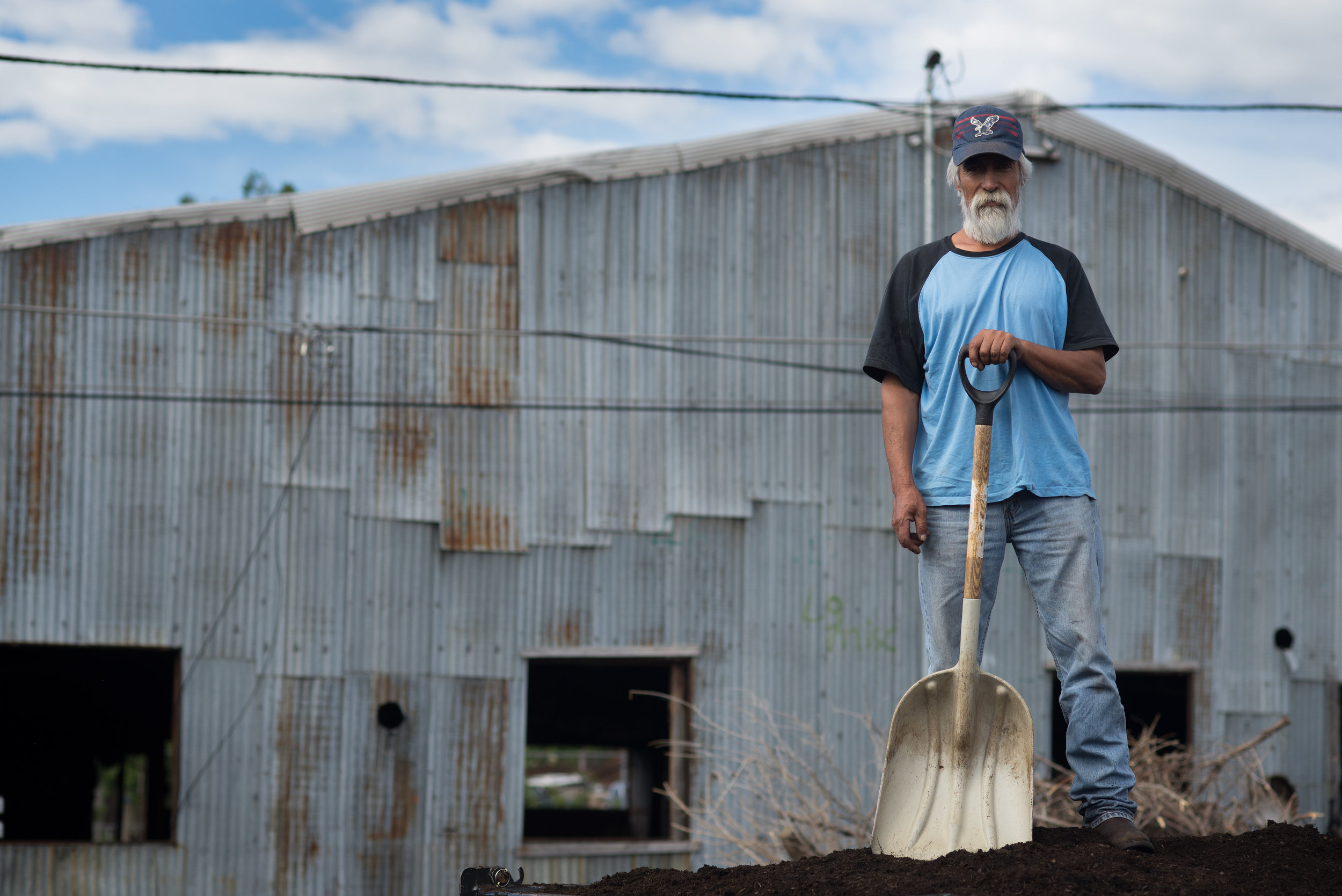



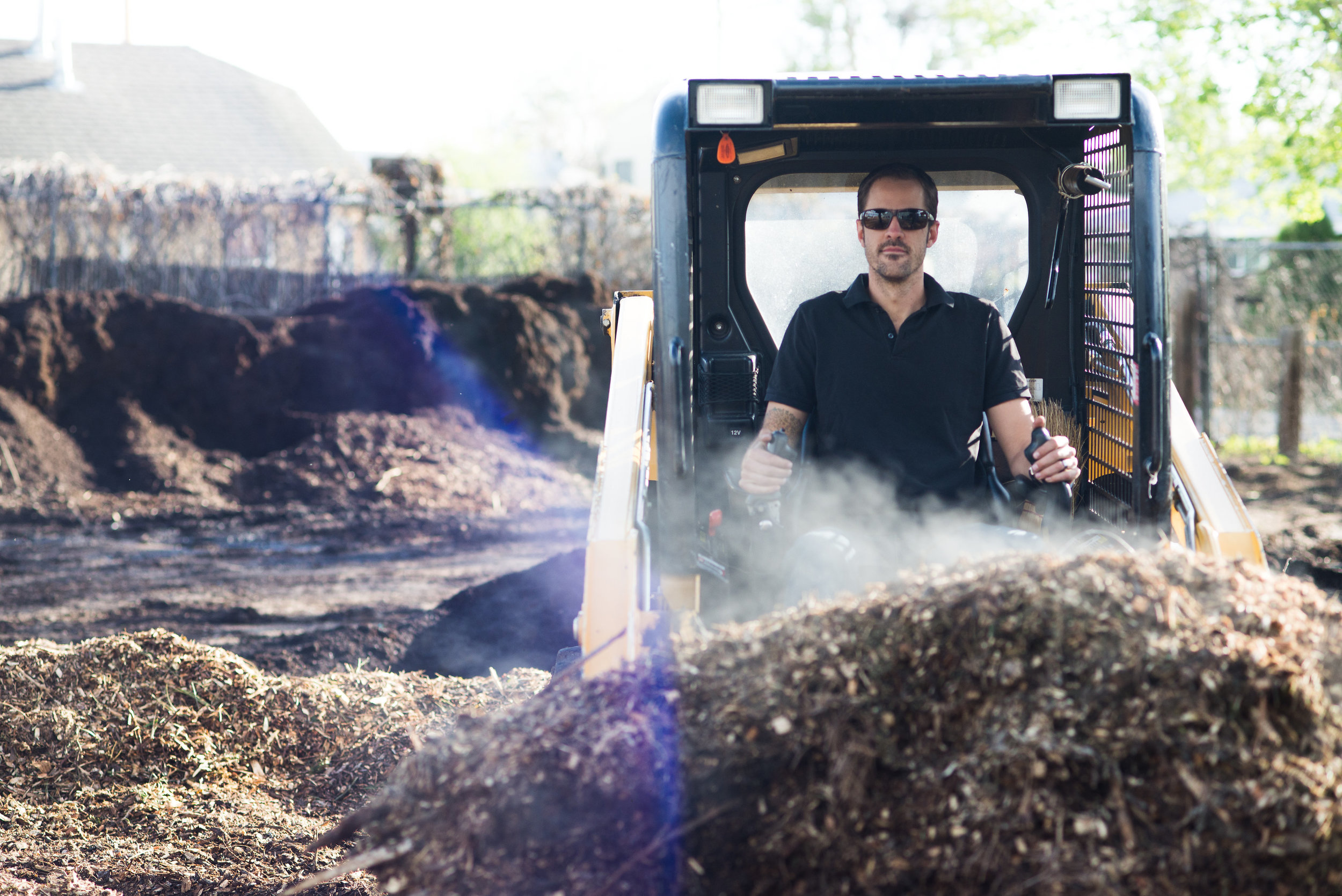
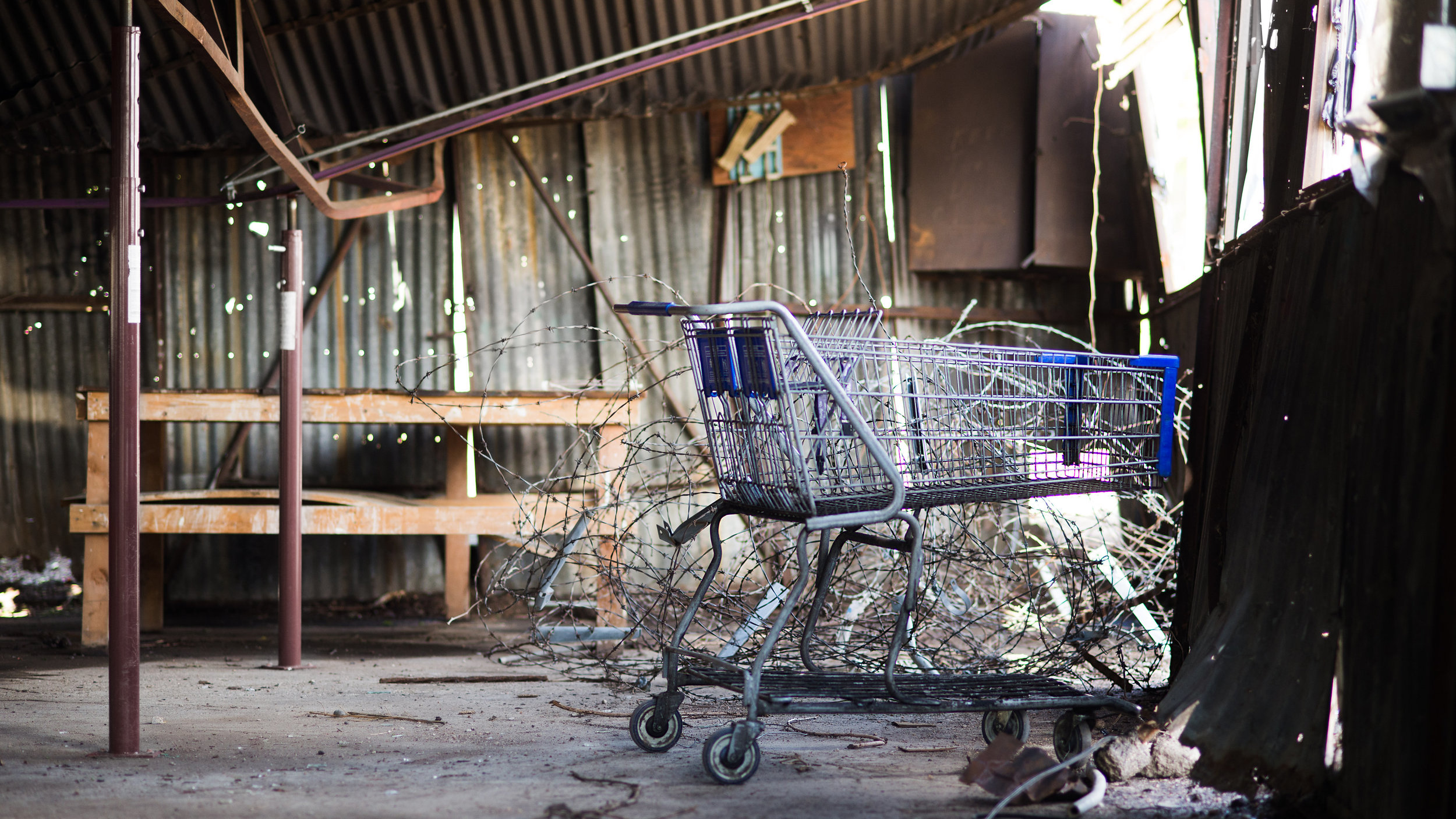
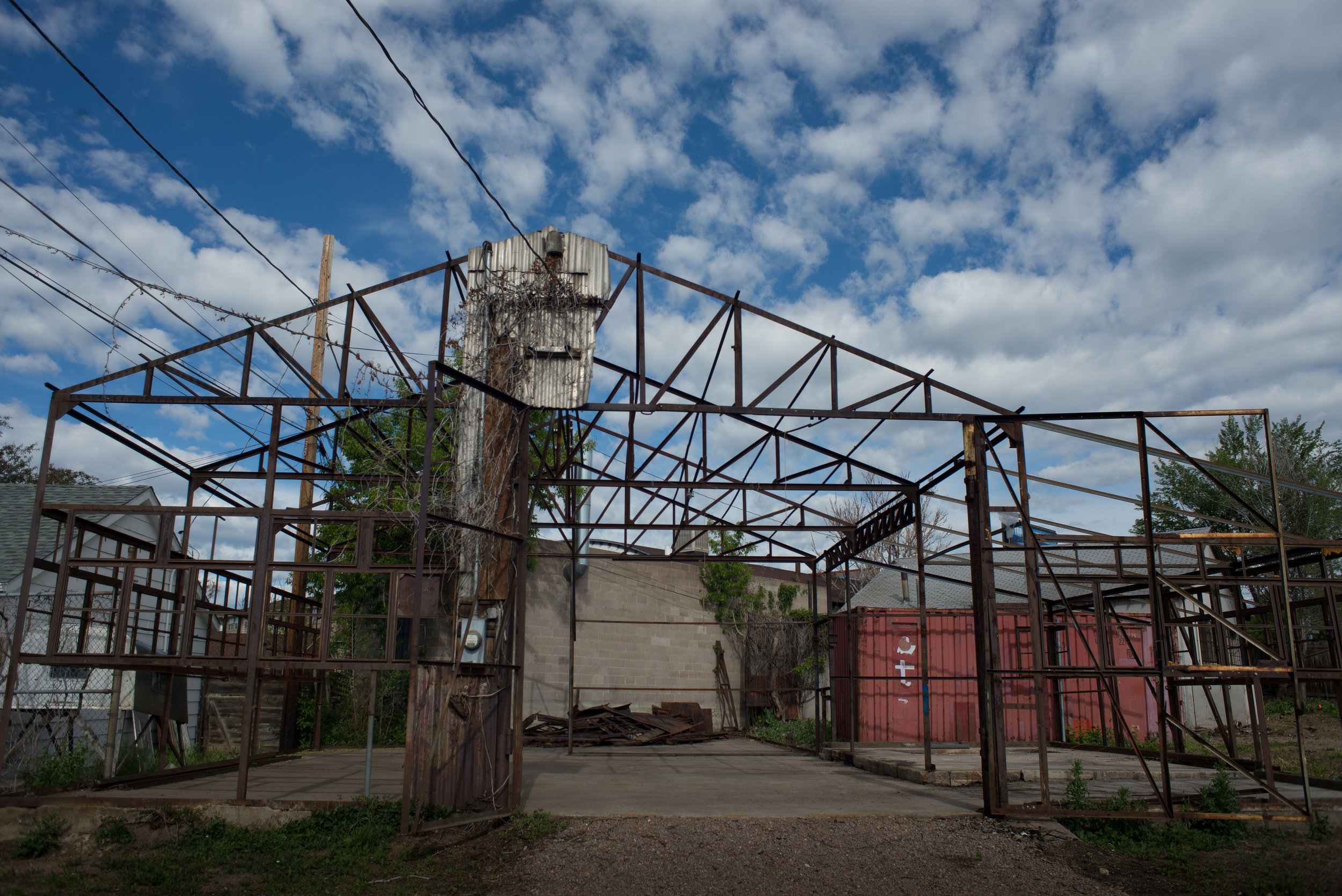
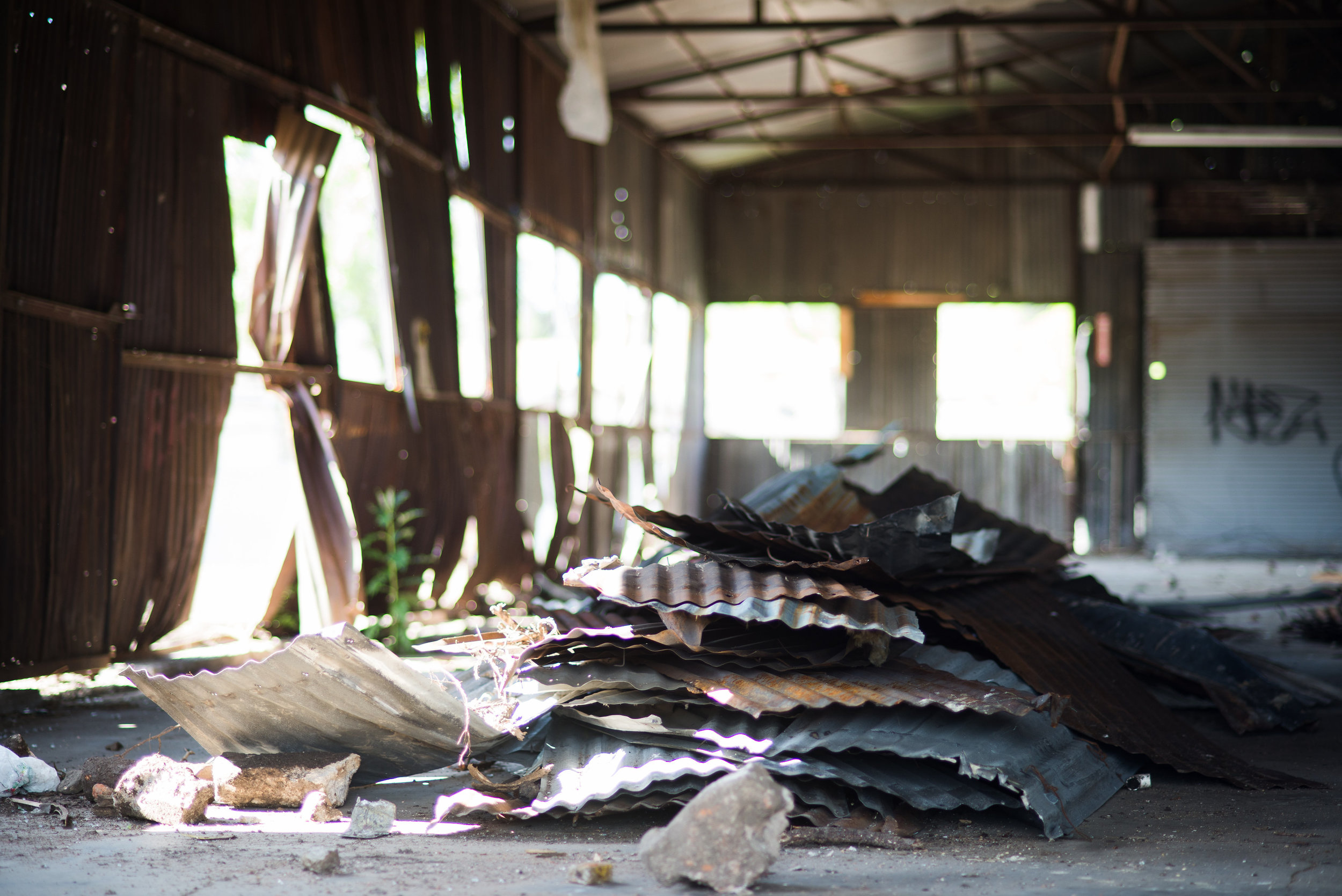
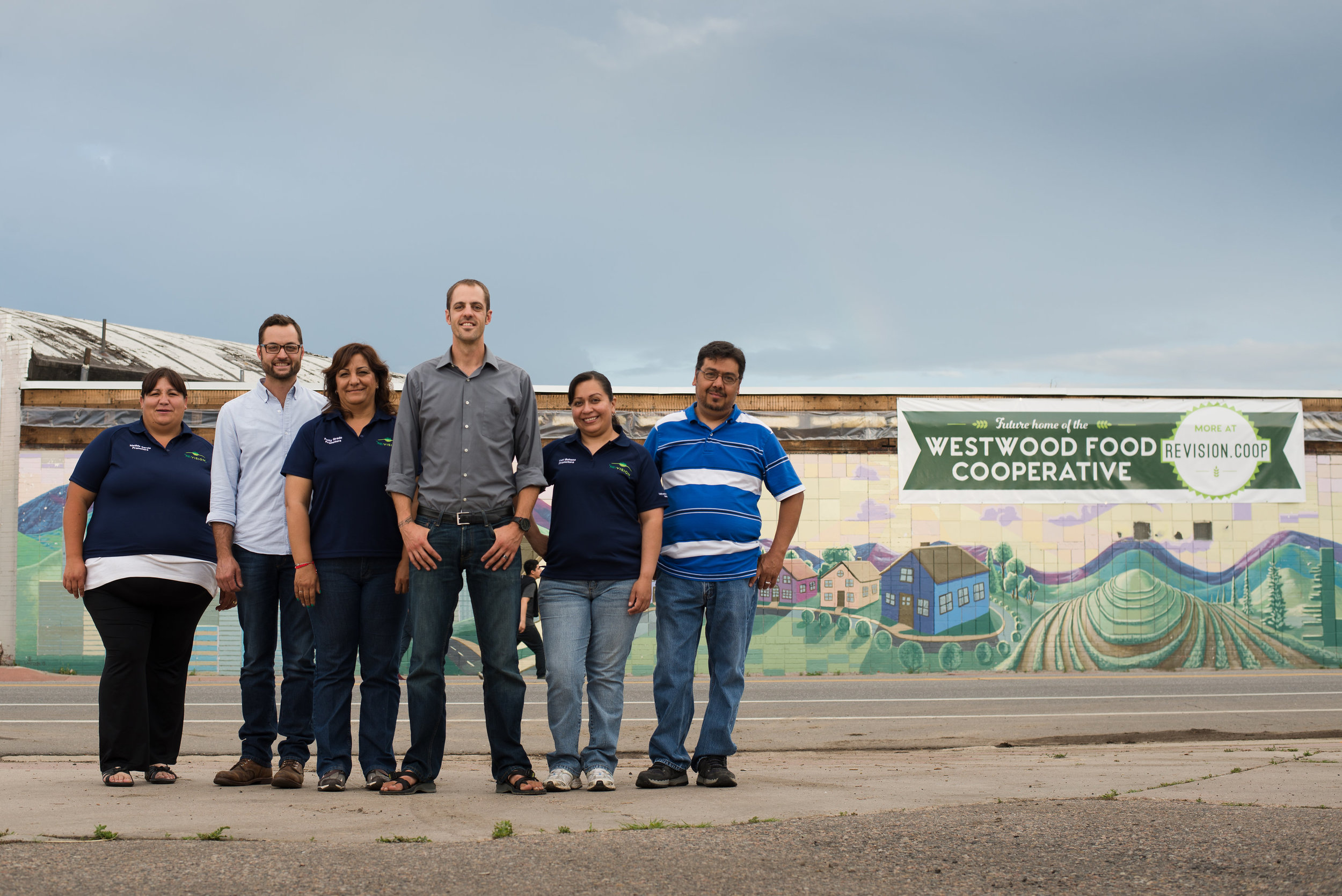
Won't You Be My Neighbor?
Welcome to Westwood. This is one of the most culturally vibrant neighborhoods in the Denver Metro Area, with over 81% of its residents identifying as Latinos. Some of the best authentic Mexican food is within a few blocks from the Westwood Food Co-op (WFC)… (here at Re:Vision, we have been really into the huaraches over at Tarrasco’s), and Denver’s favorite Thai and pho spots have been serving up noodles around the corner for years.
The original version of this post can be found here!
Welcome to Westwood. This is one of the most culturally vibrant neighborhoods in the Denver Metro Area, with over 81% of its residents identifying as Latinos. Some of the best authentic Mexican food is within a few blocks from the Westwood Food Co-op (WFC)… (here at Re:Vision, we have been really into the huaraches over at Tarrasco’s), and Denver’s favorite Thai and pho spots have been serving up noodles around the corner for years.
The WFC sits right on Morrison Road, a busy street dotted with neon greens, pastel pinks, and deep blues. From intricate murals on most buildings to brightly painted trash cans on sidewalks, this neighborhood is rich with culture and united in their strong identity of art, history, and diversity.
So how does a cooperative grocery store fit into all of this?
Despite the number of tasty restaurants in Westwood, it is actually a food desert—meaning that most of the population has limited access to affordable, healthy food. So yes, you may be able to sit down to a good plate of gorditas, but you will have an awfully difficult time finding a fresh head of lettuce at the grocery store.
It’s not financially feasible to eat out every meal and the reality is that there are very few grocery stores in the area, with the ones close by closing just this past weekend! The nearest Safeway closed just a few days ago. Because of this lack of access, many residents here suffer from a variety of health risks, with 67% of the community at risk of obesity and diet-related illnesses. As a result the average lifespan of a Westwood resident is 12 years shorter than surrounding Denver neighborhoods.
The Westwood Food Co-op exists to transform a food desert into a local food oasis. How? Not by bringing in a big name supermarket or by forcing residents to travel long distances to other markets (taking money out of their own local economy), but by working with the neighborhood to cooperatively build its own grocery store from the ground up. This keeps the money, the power, and the identity in the hands of the people—an important model for sustainable communities.
So sign up to become a member of the Westwood co-op and welcome! Welcome to a community with deep roots and united efforts to grow their own solutions.
